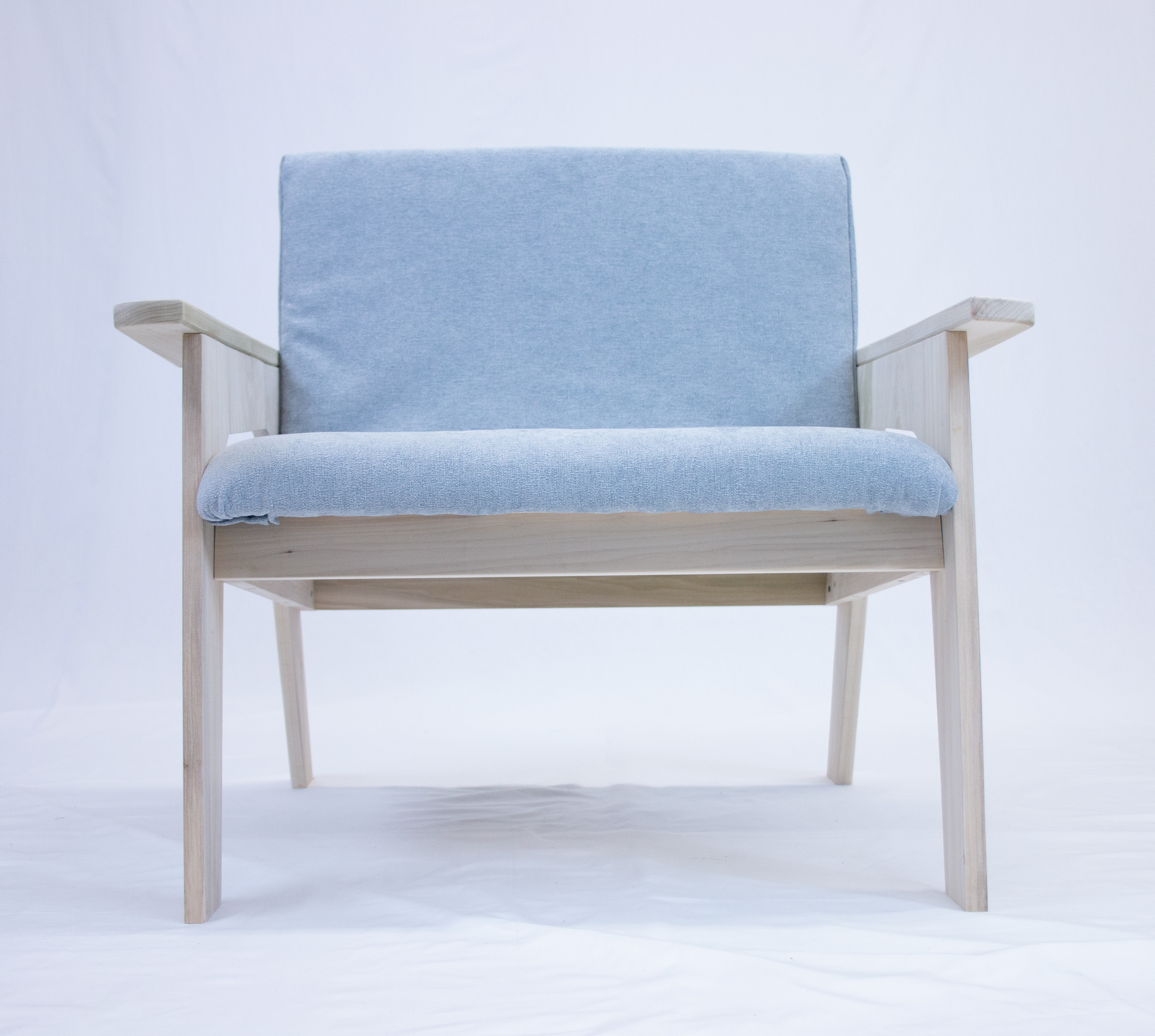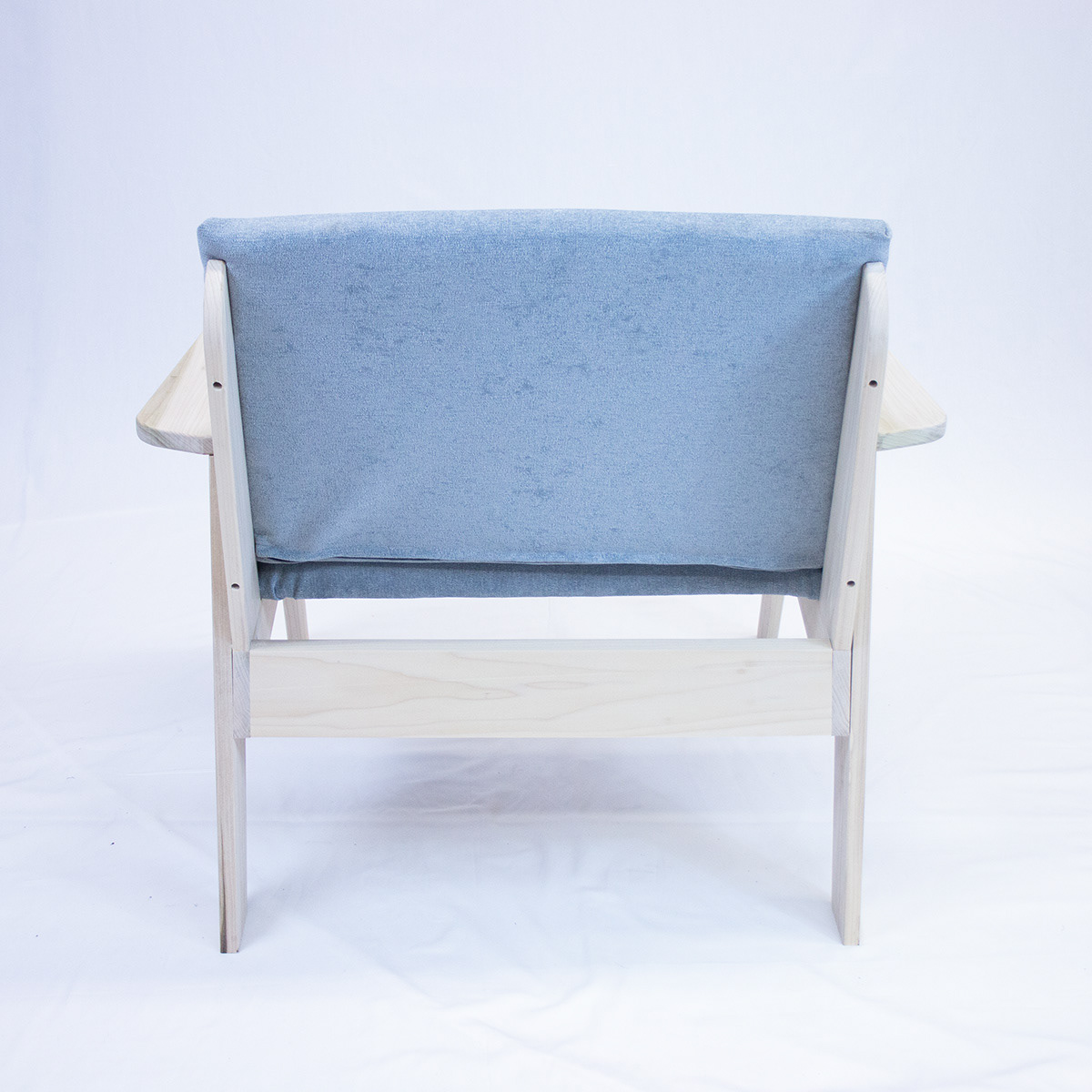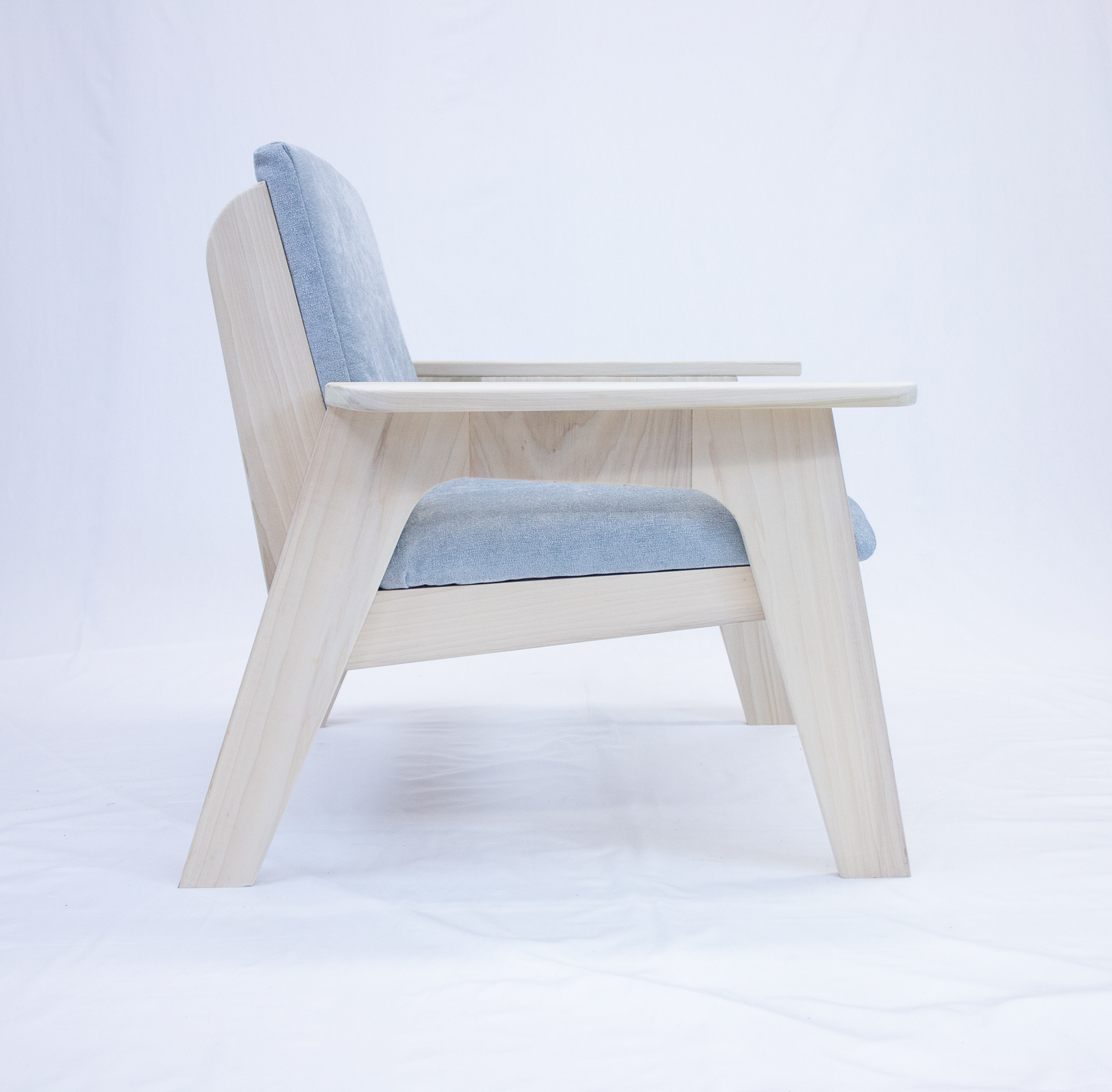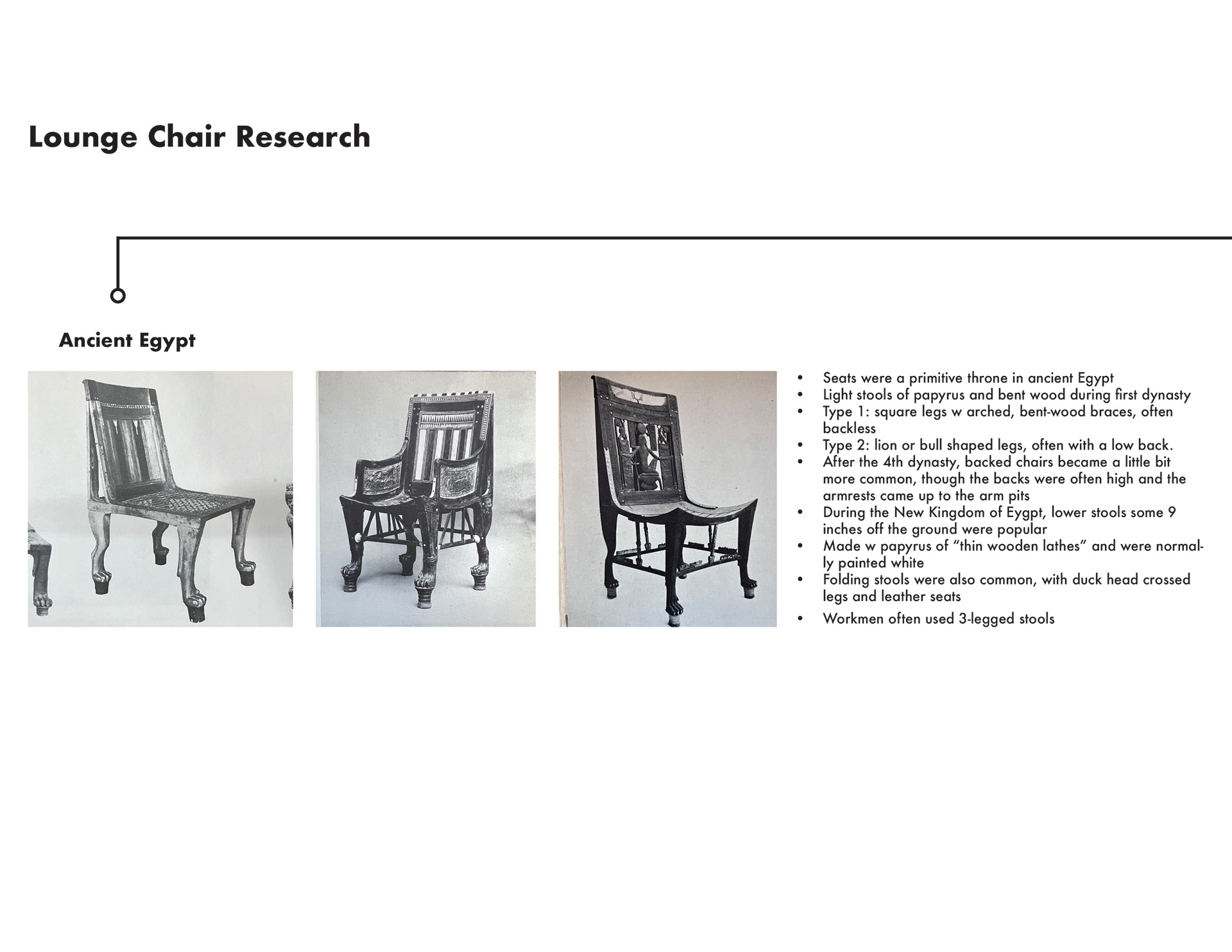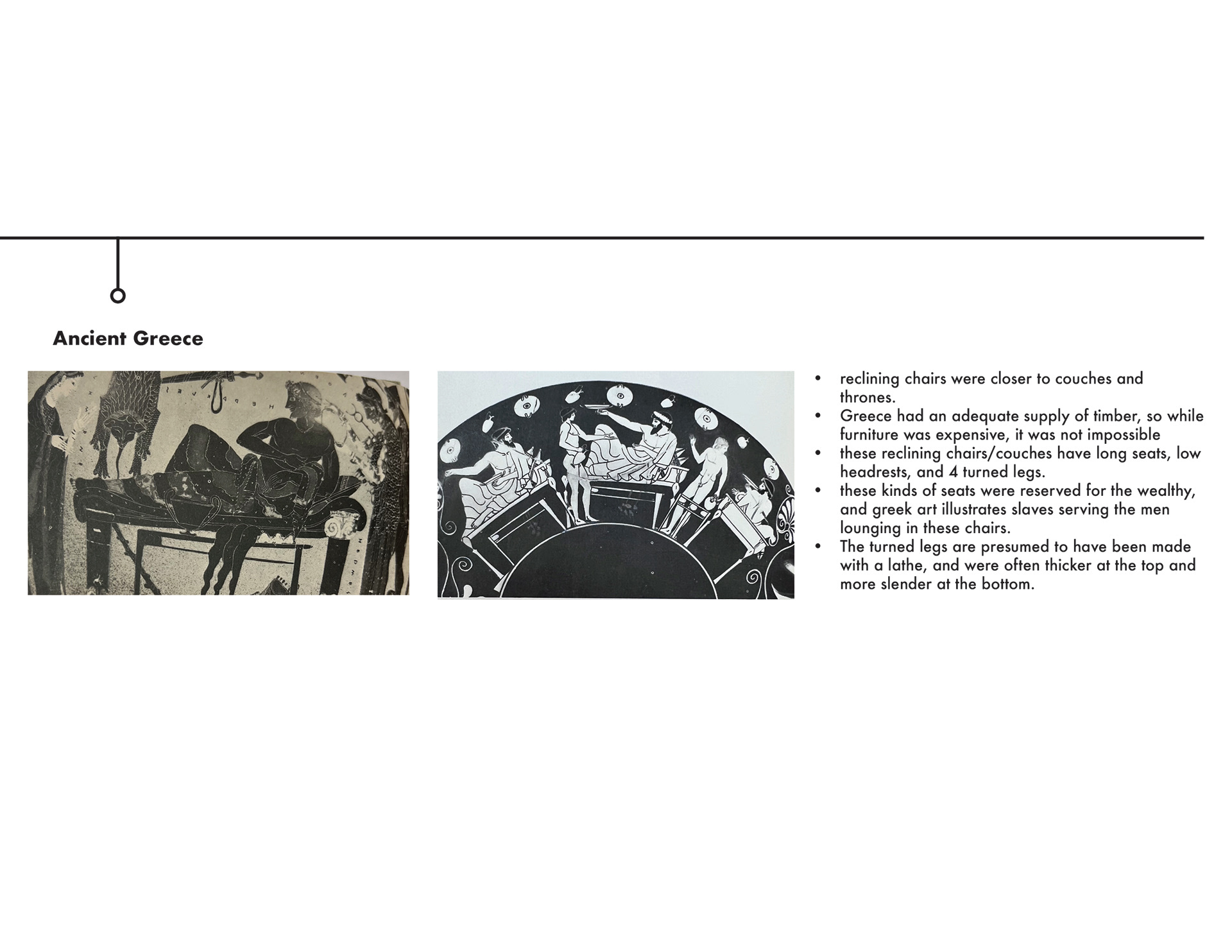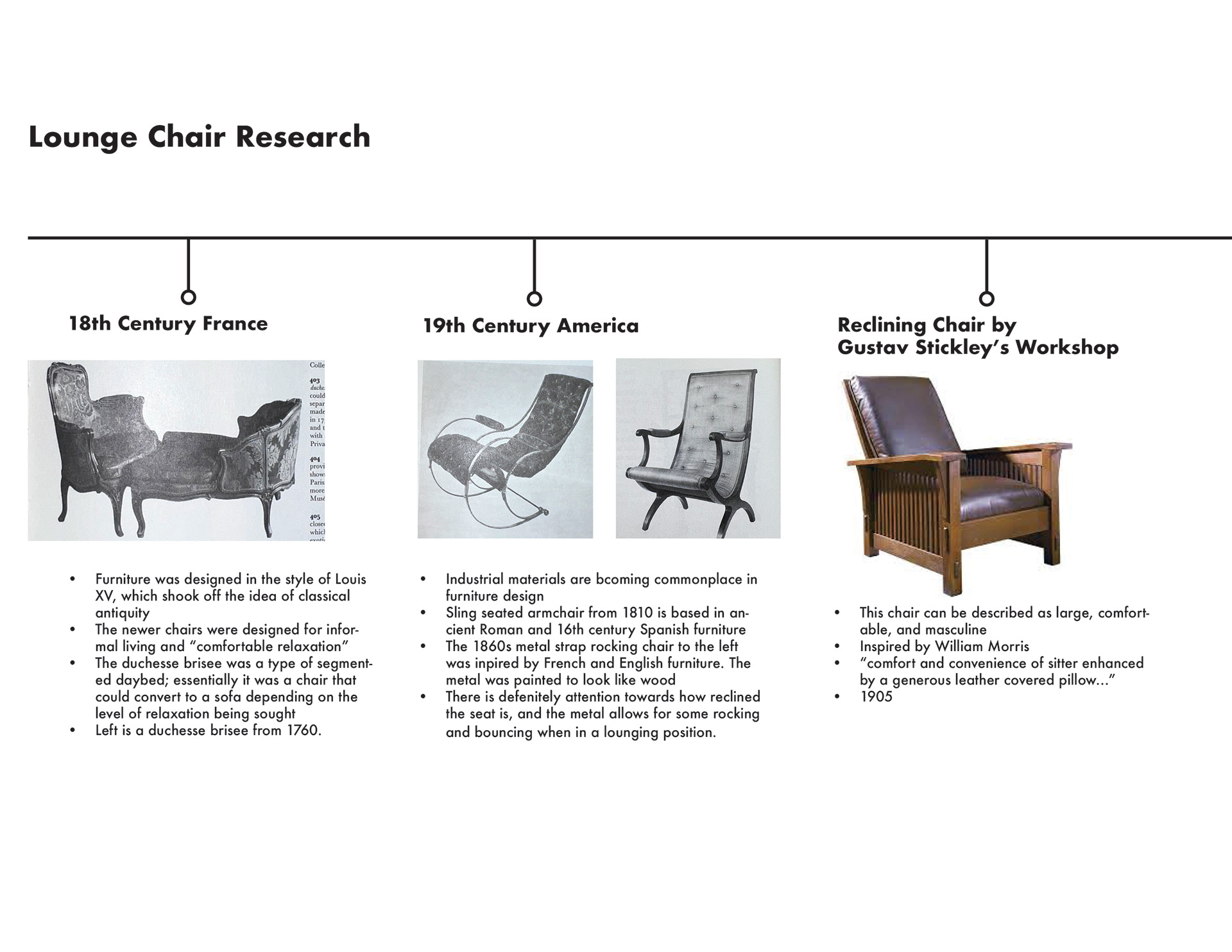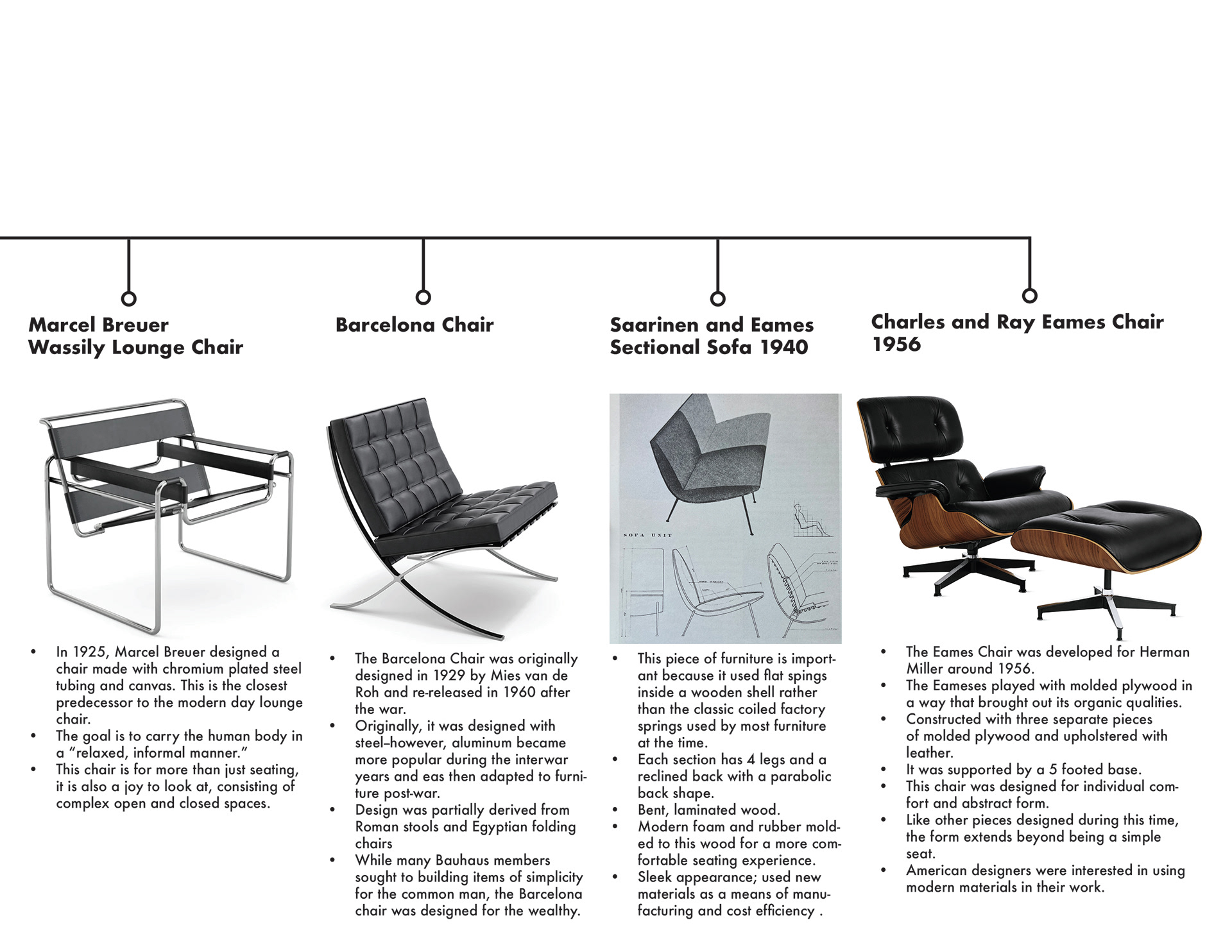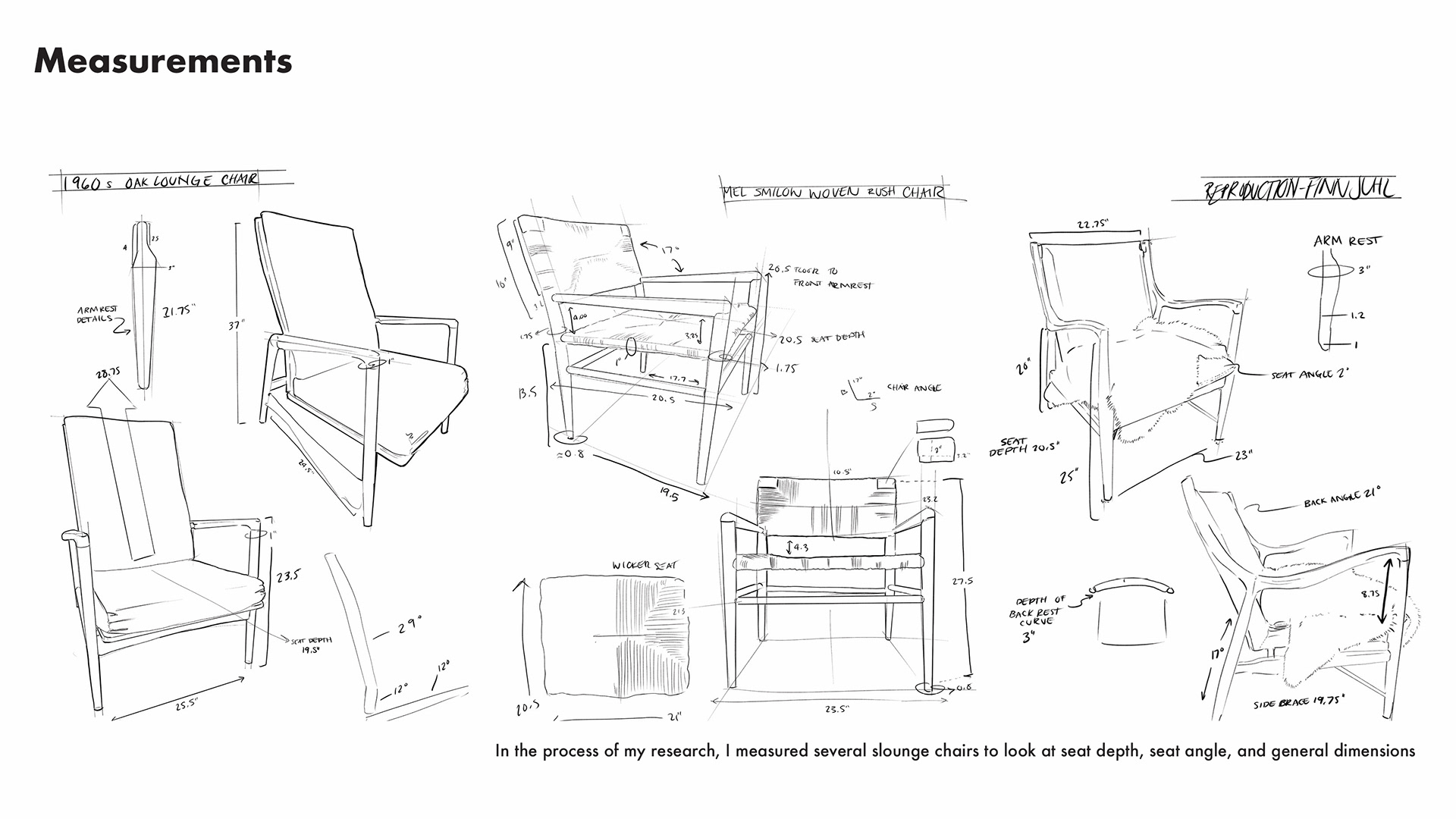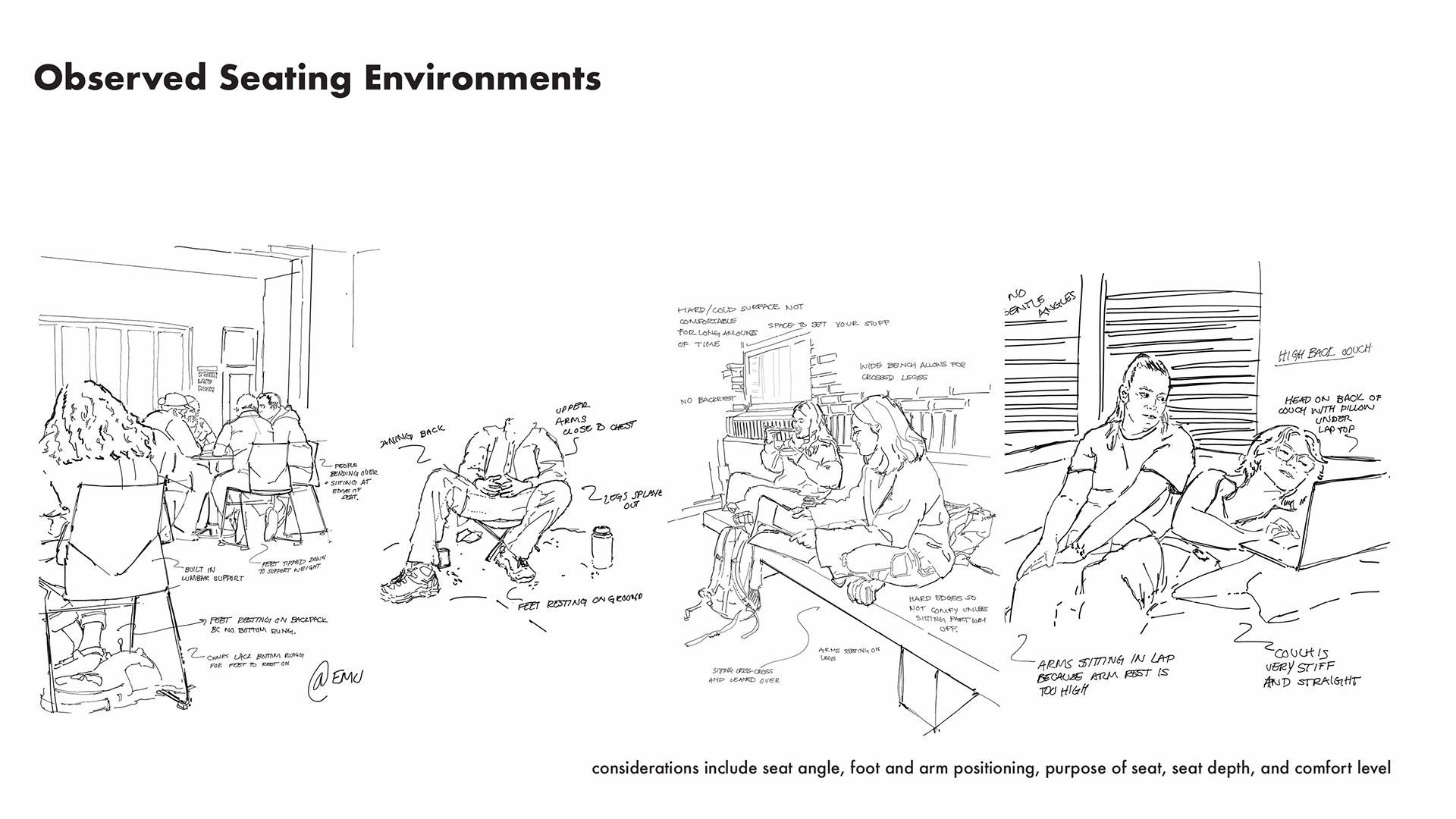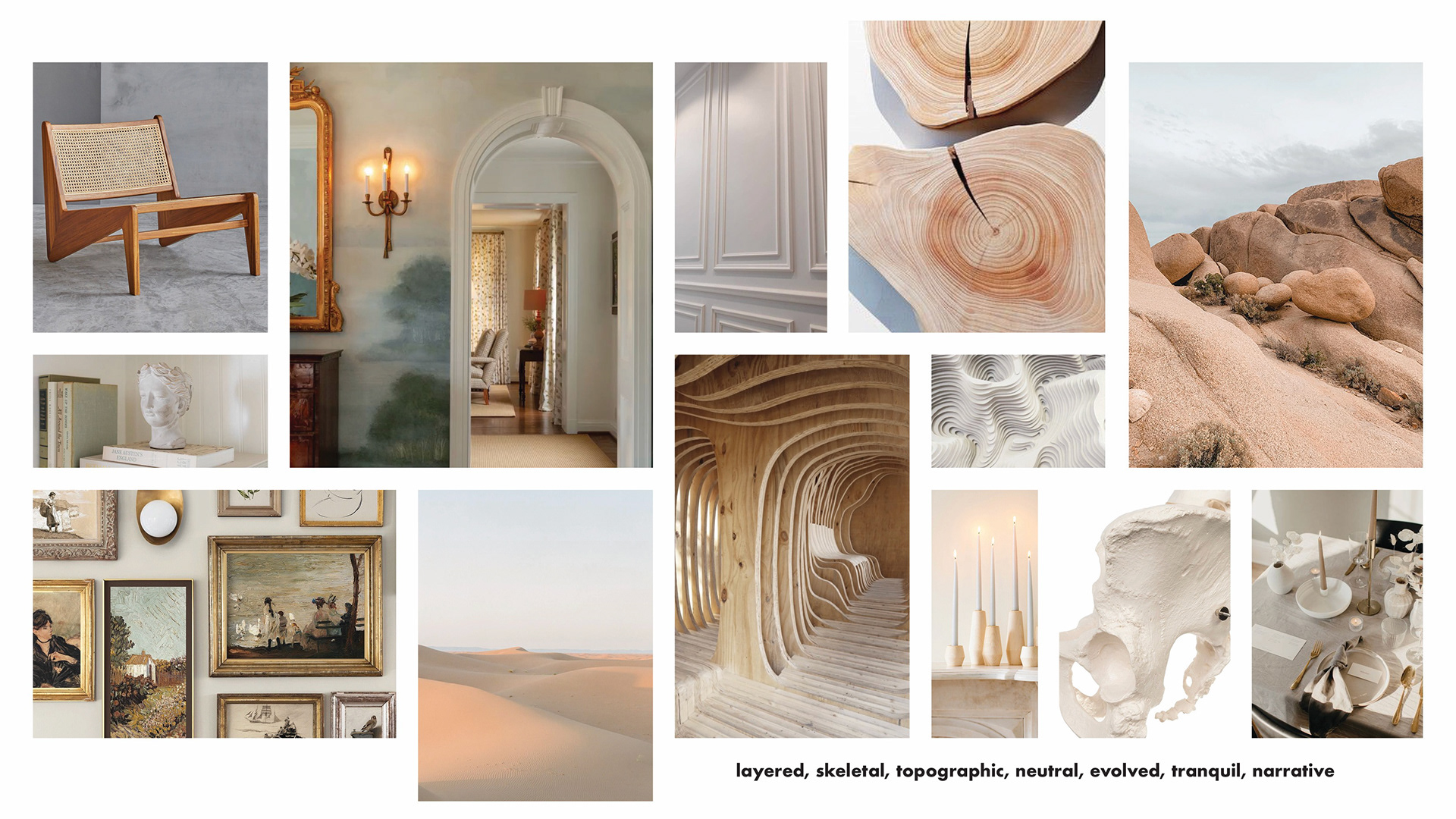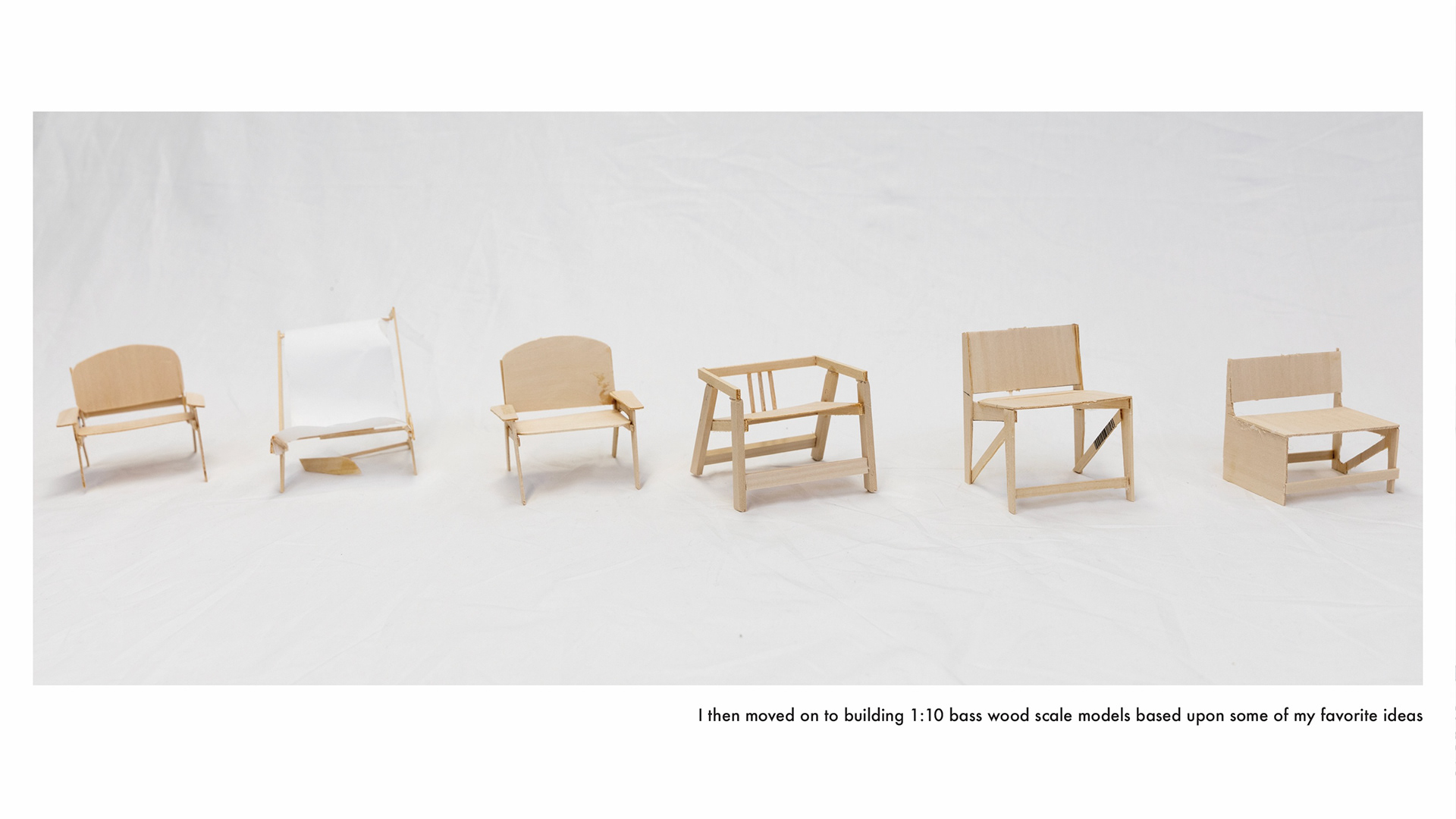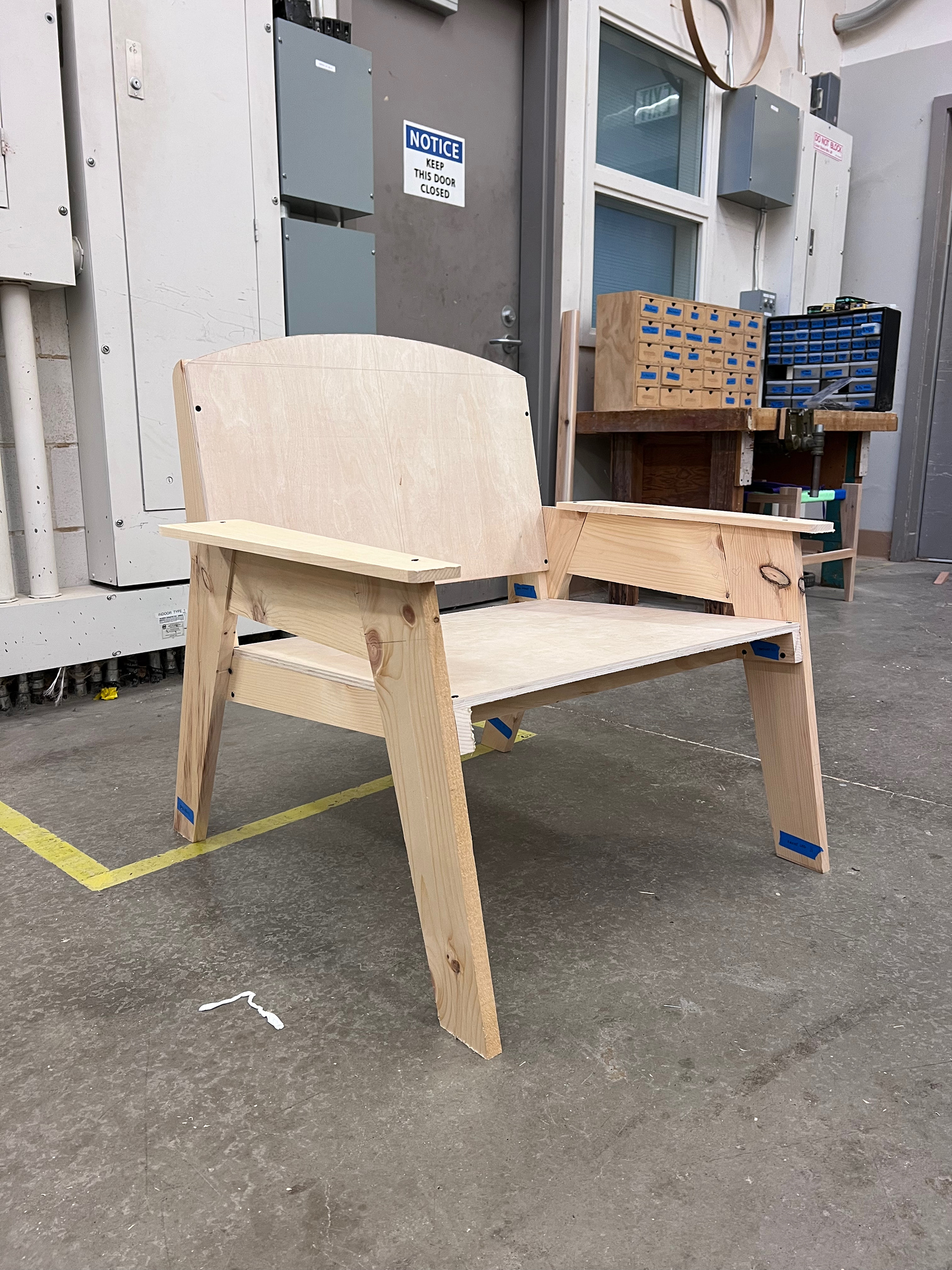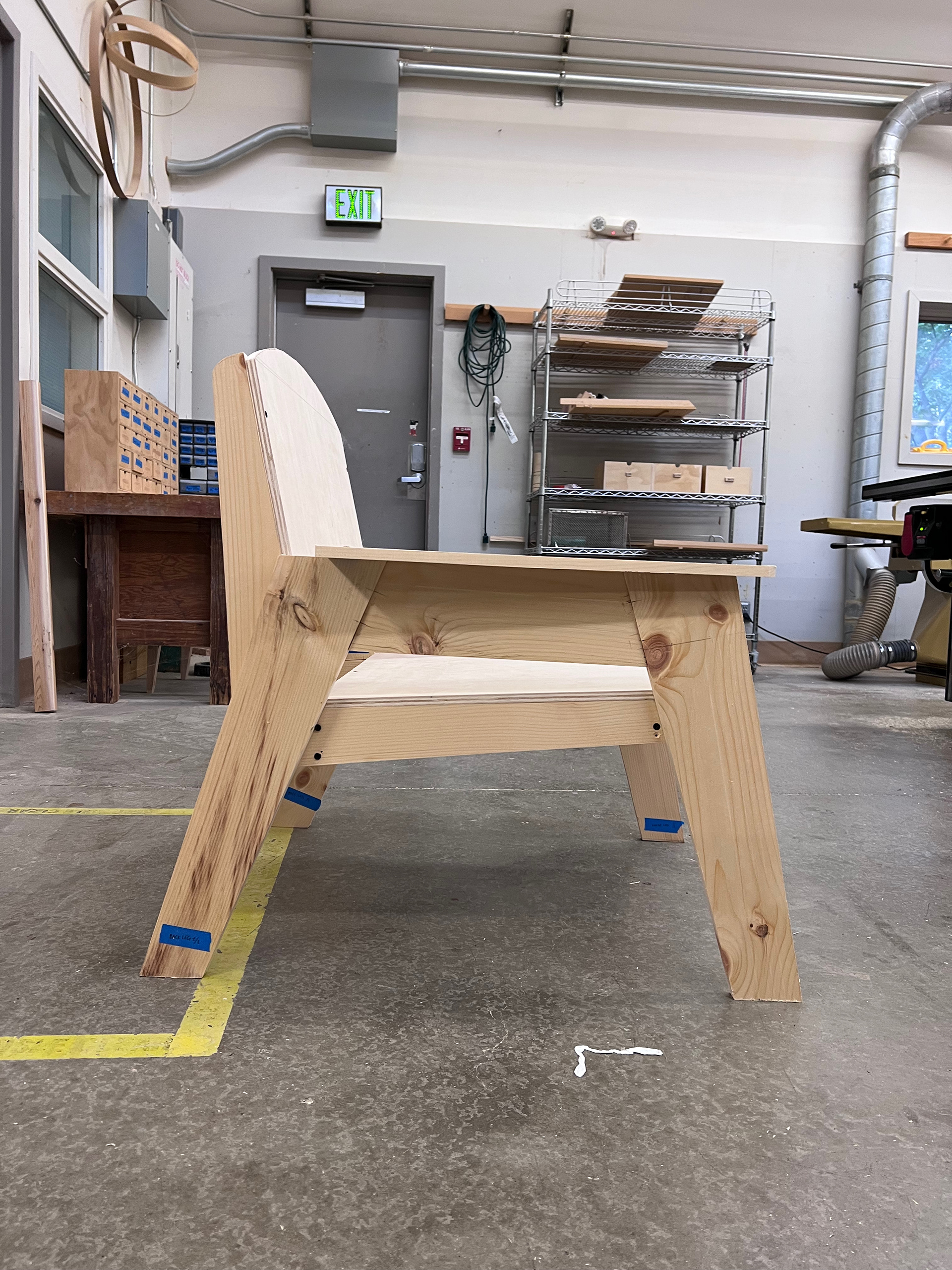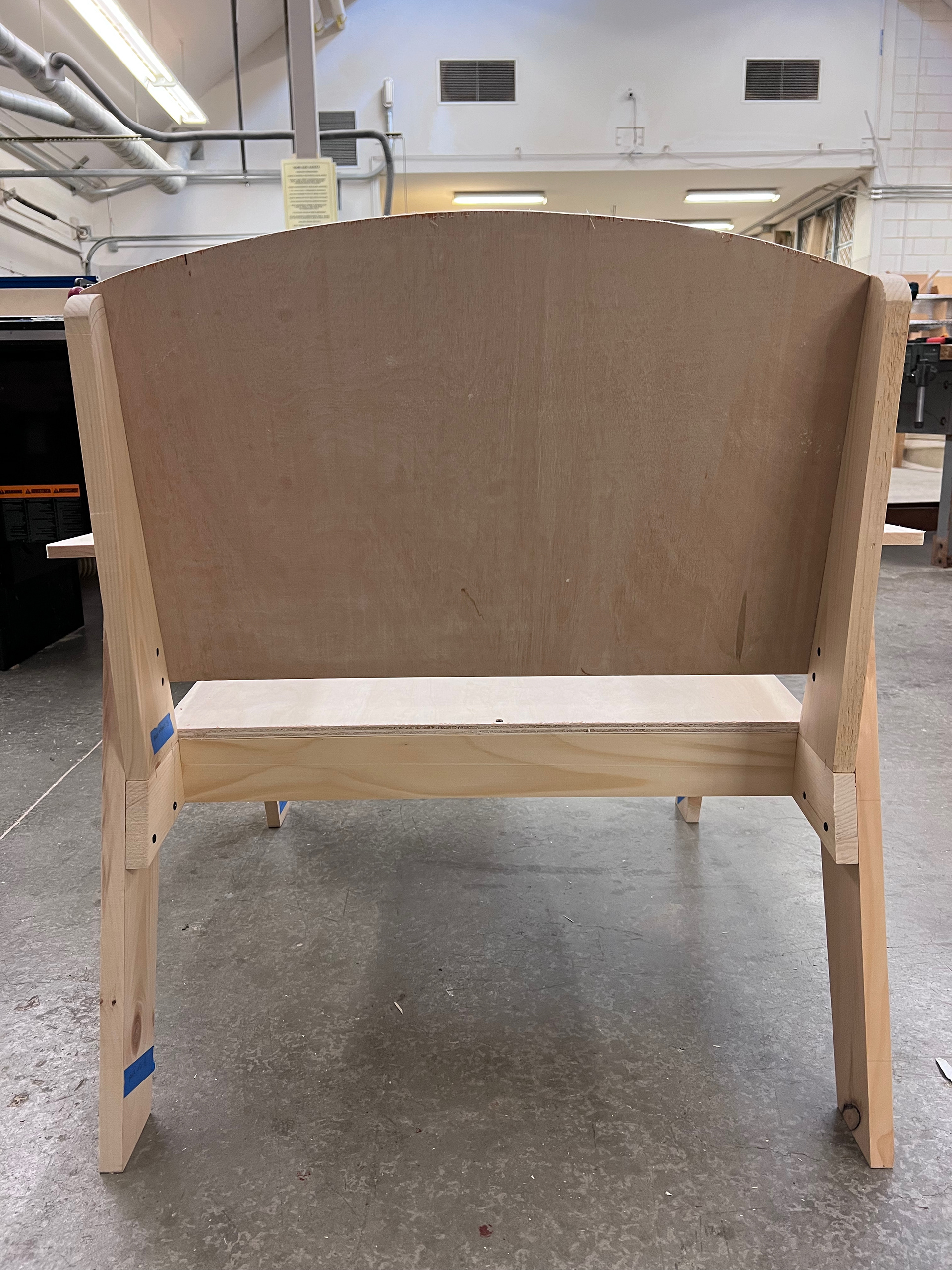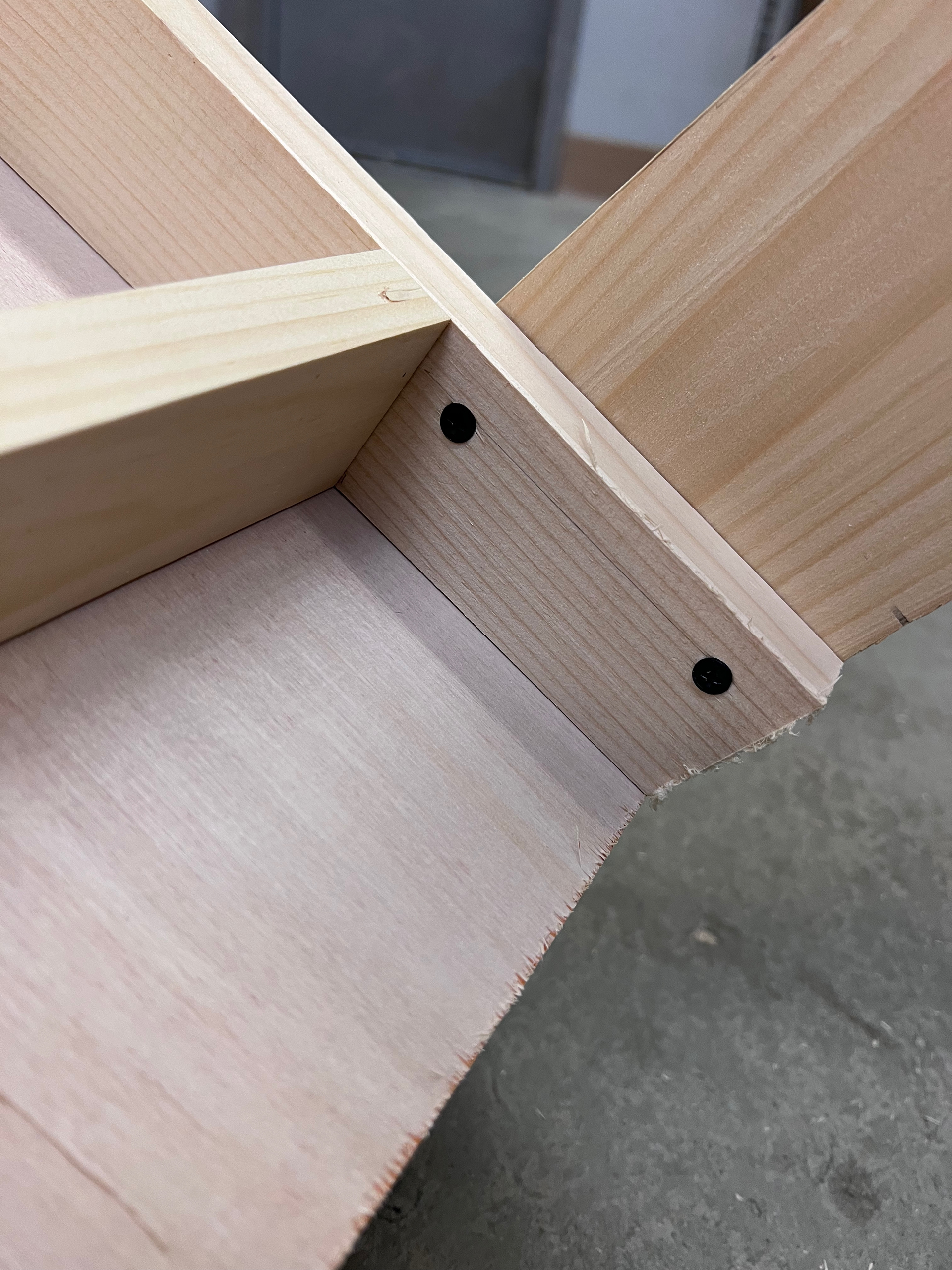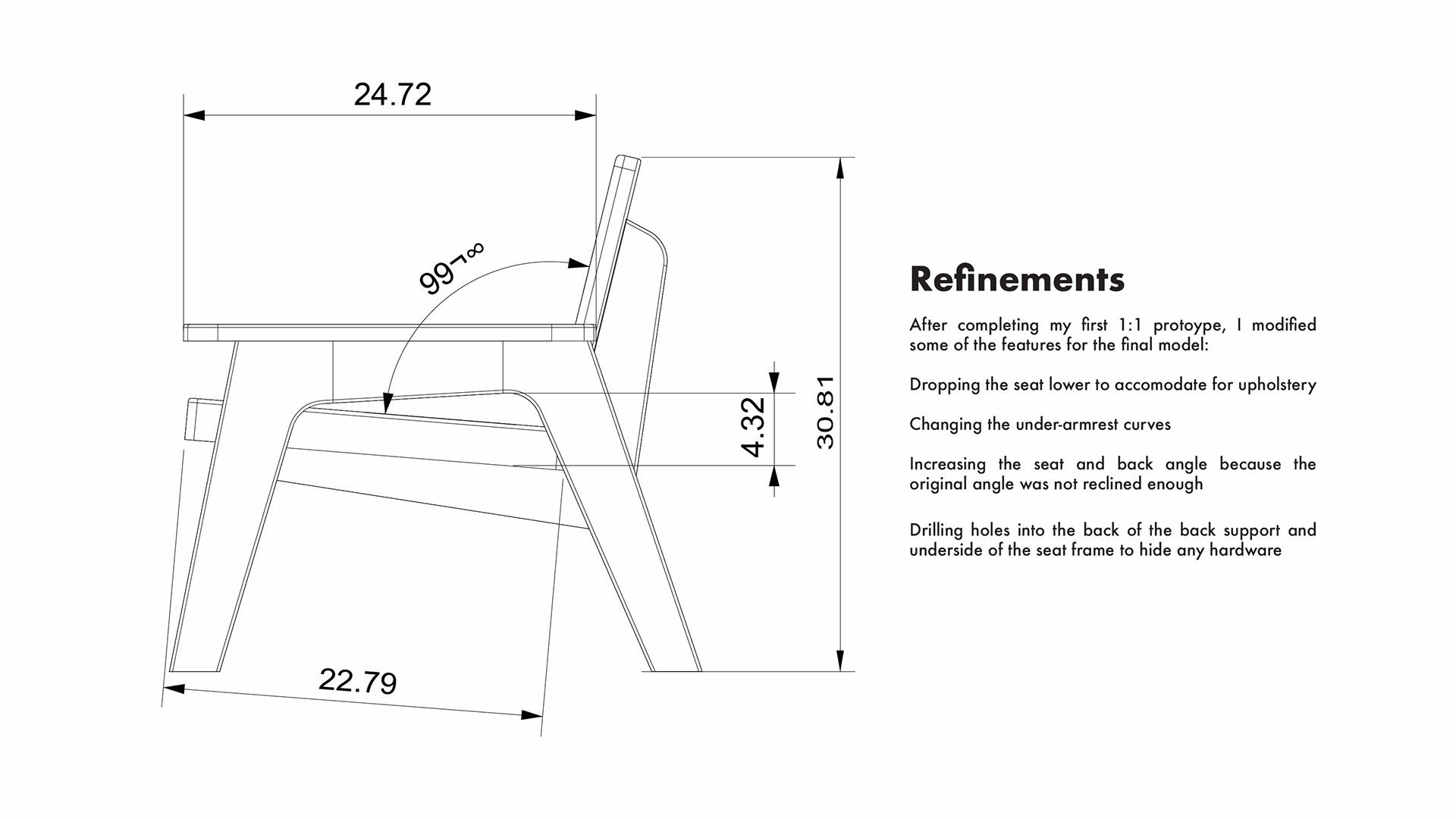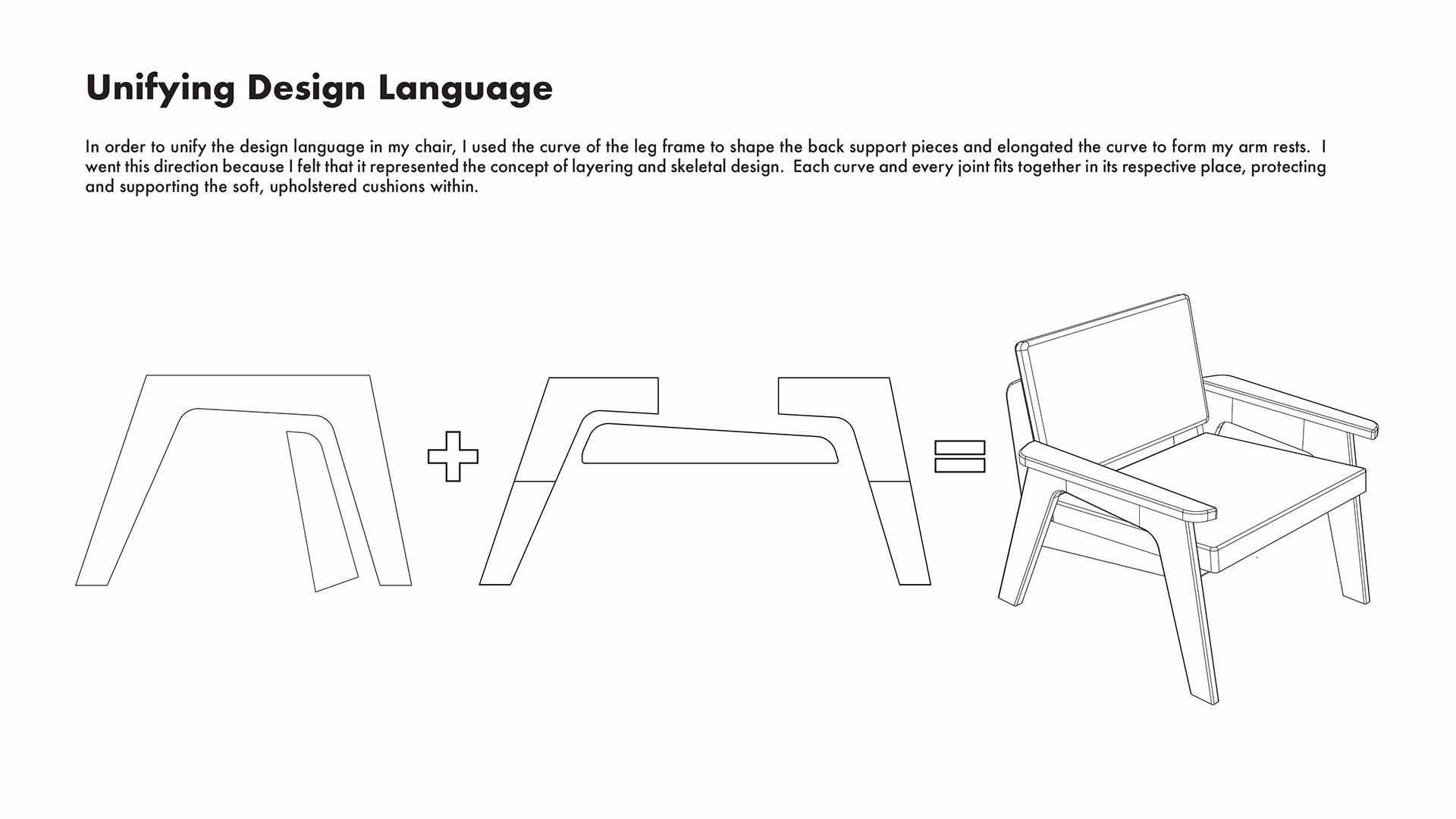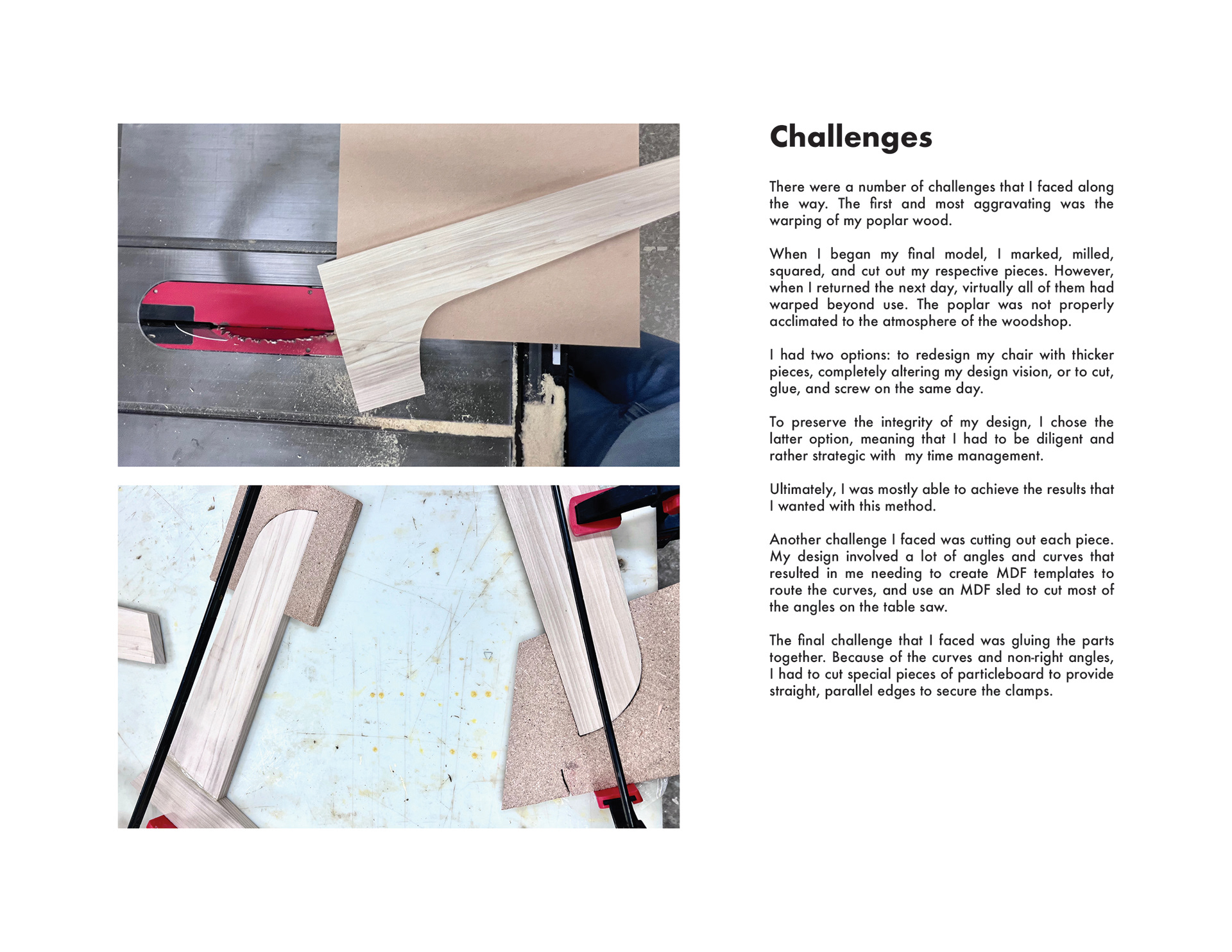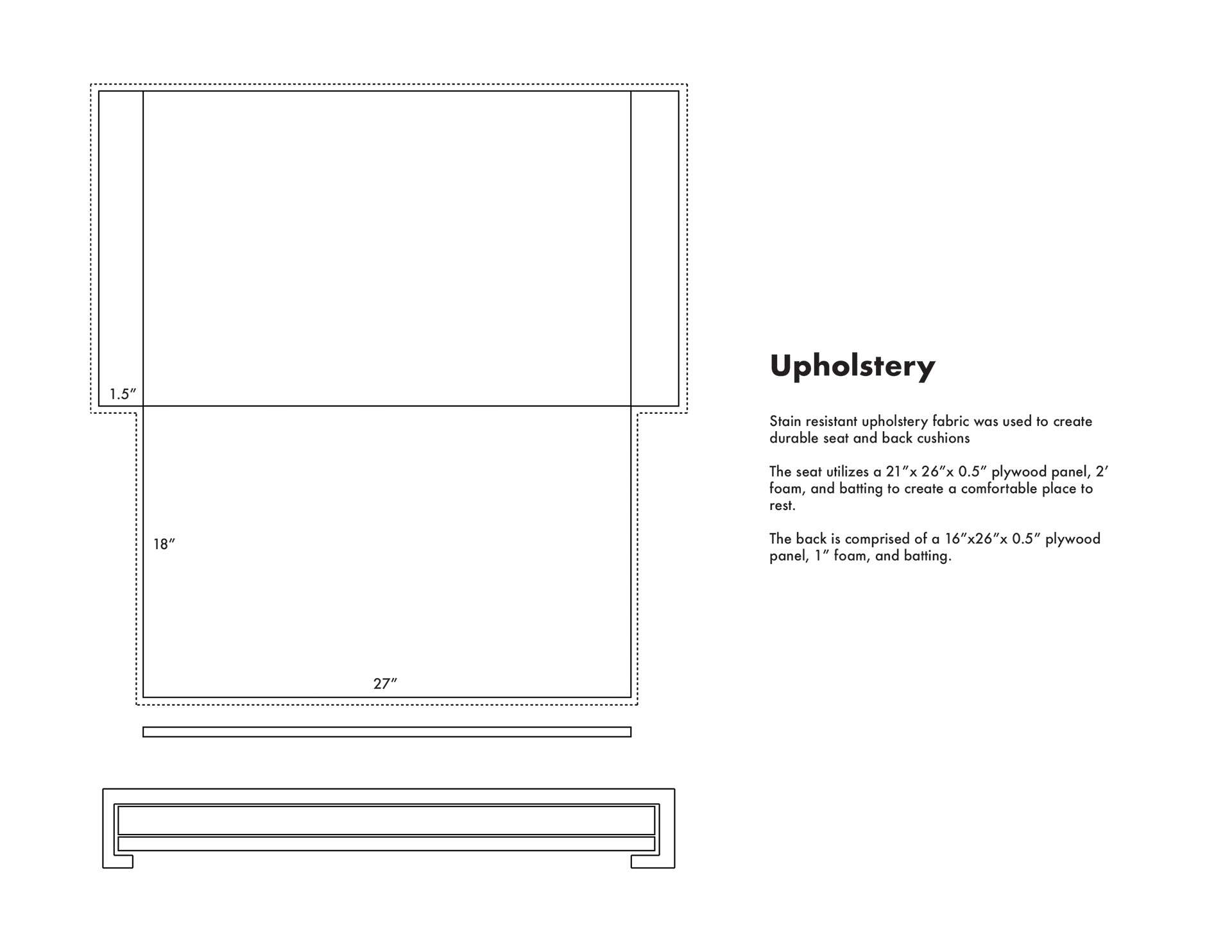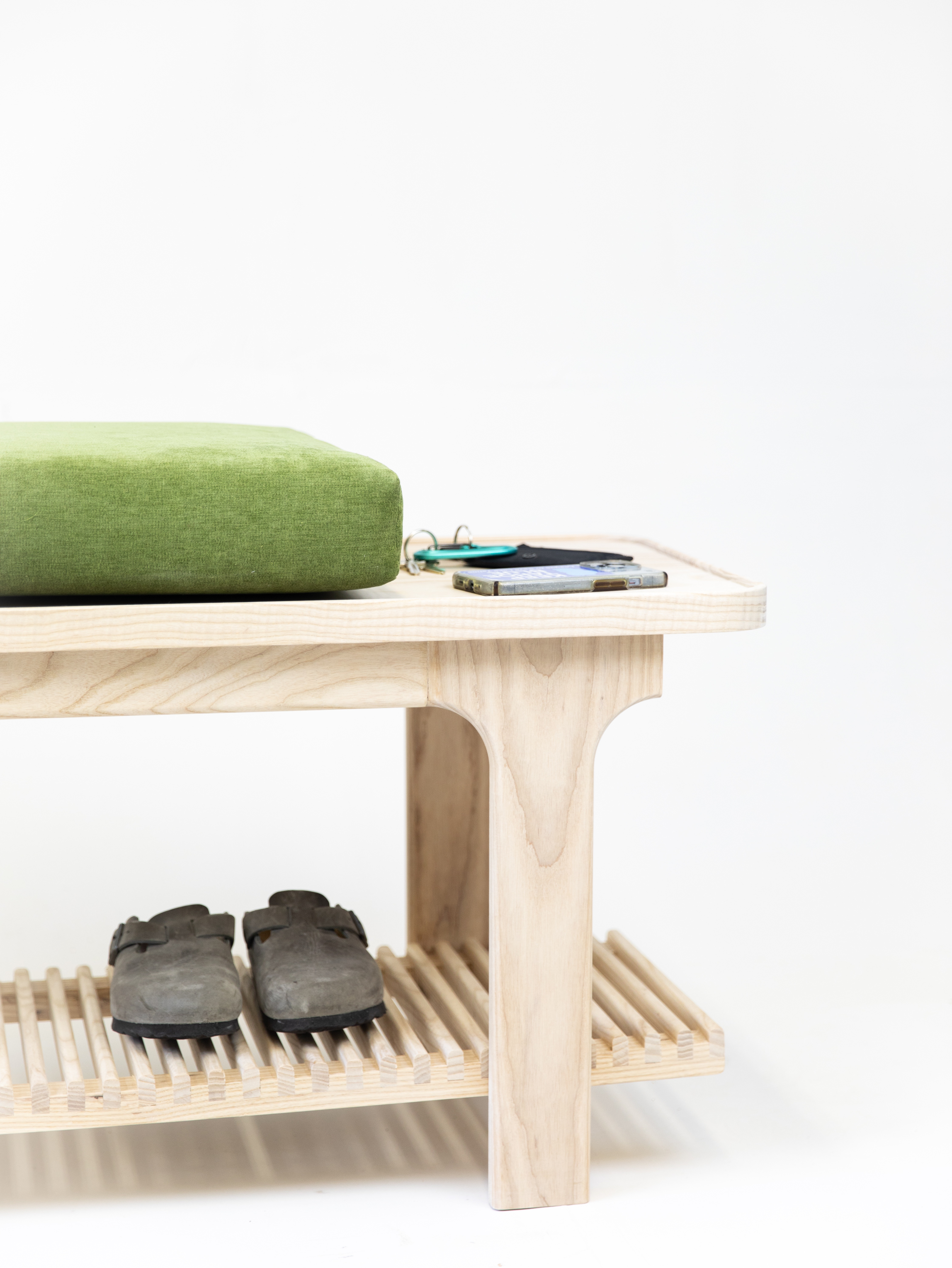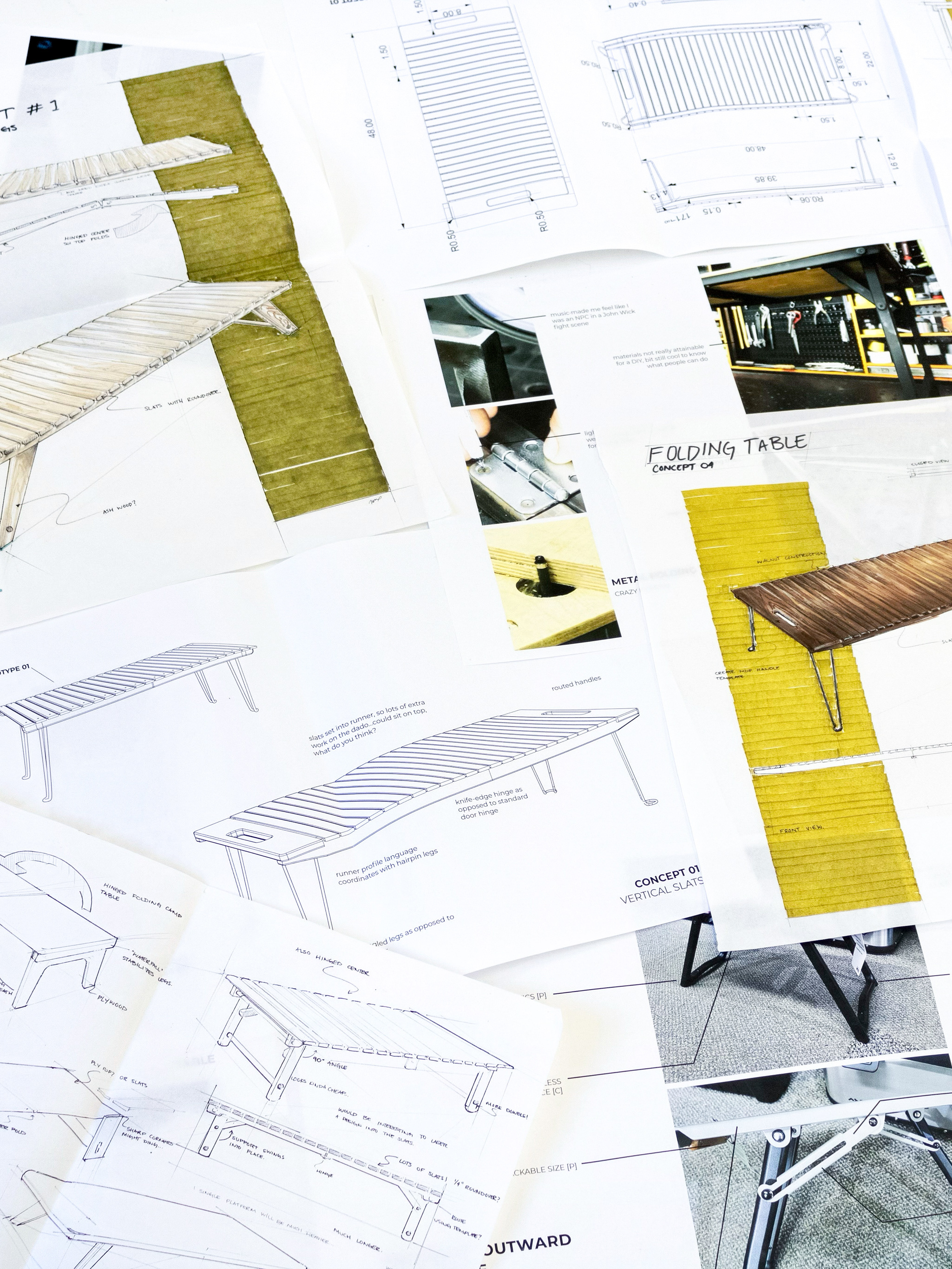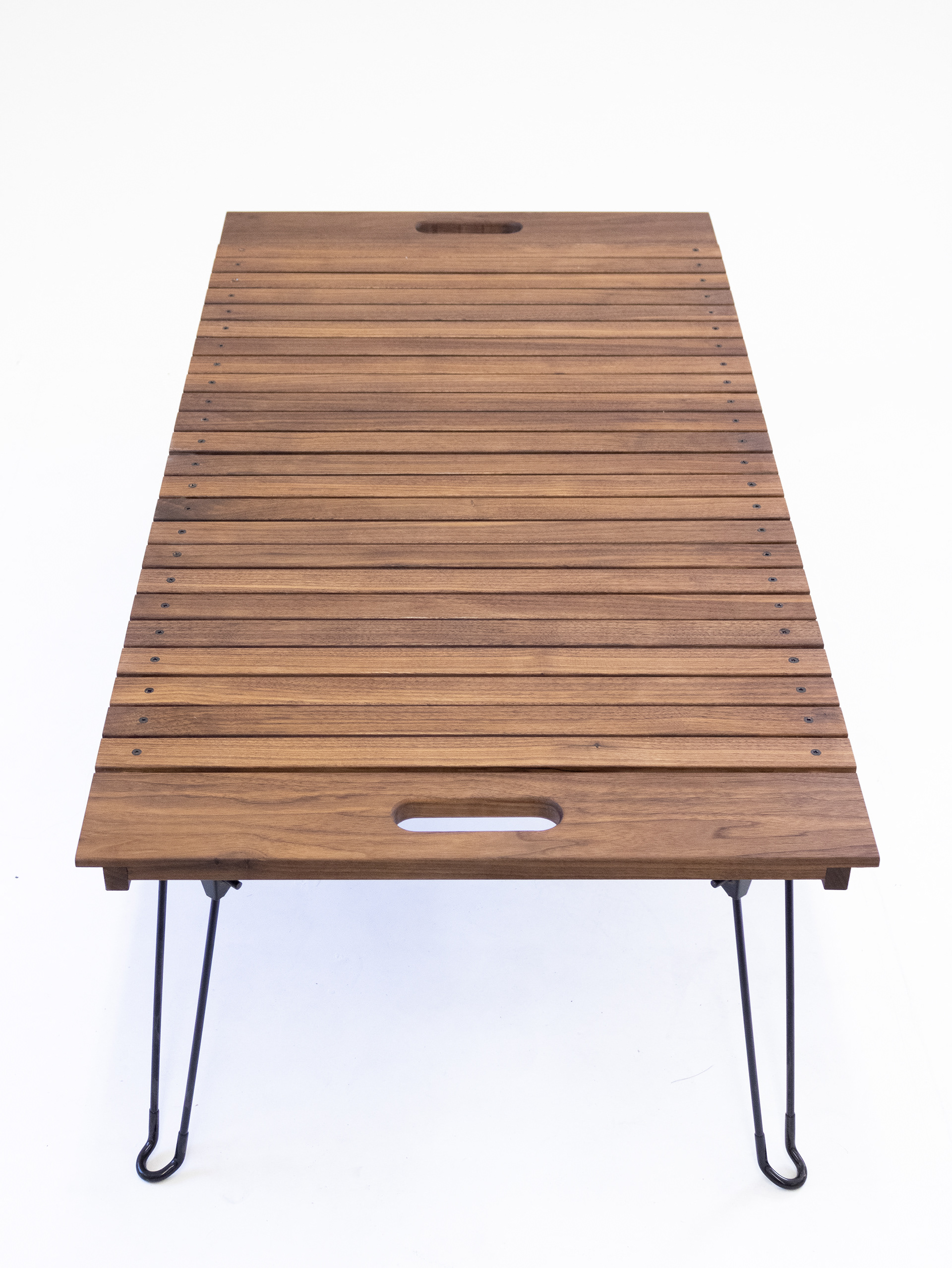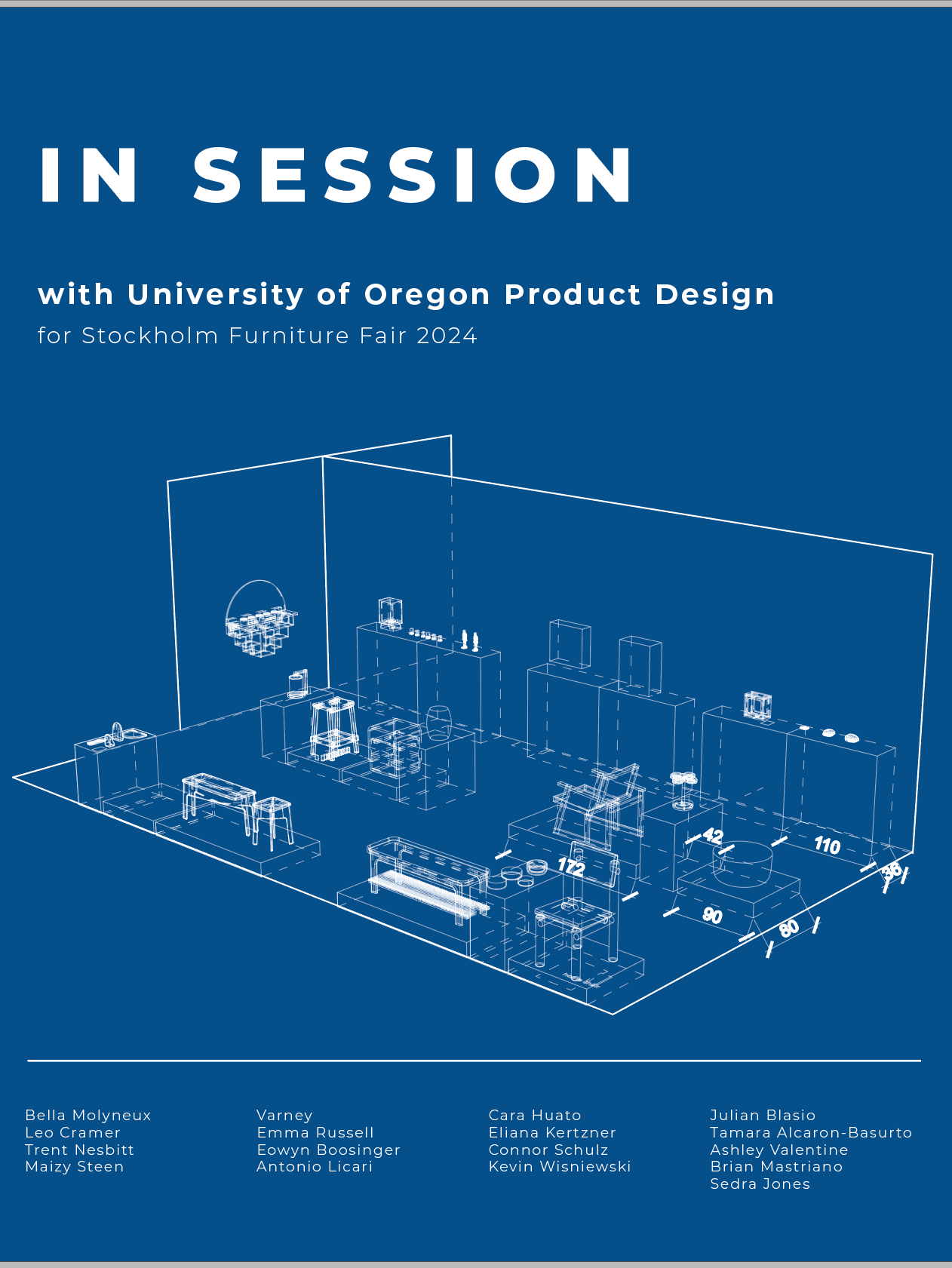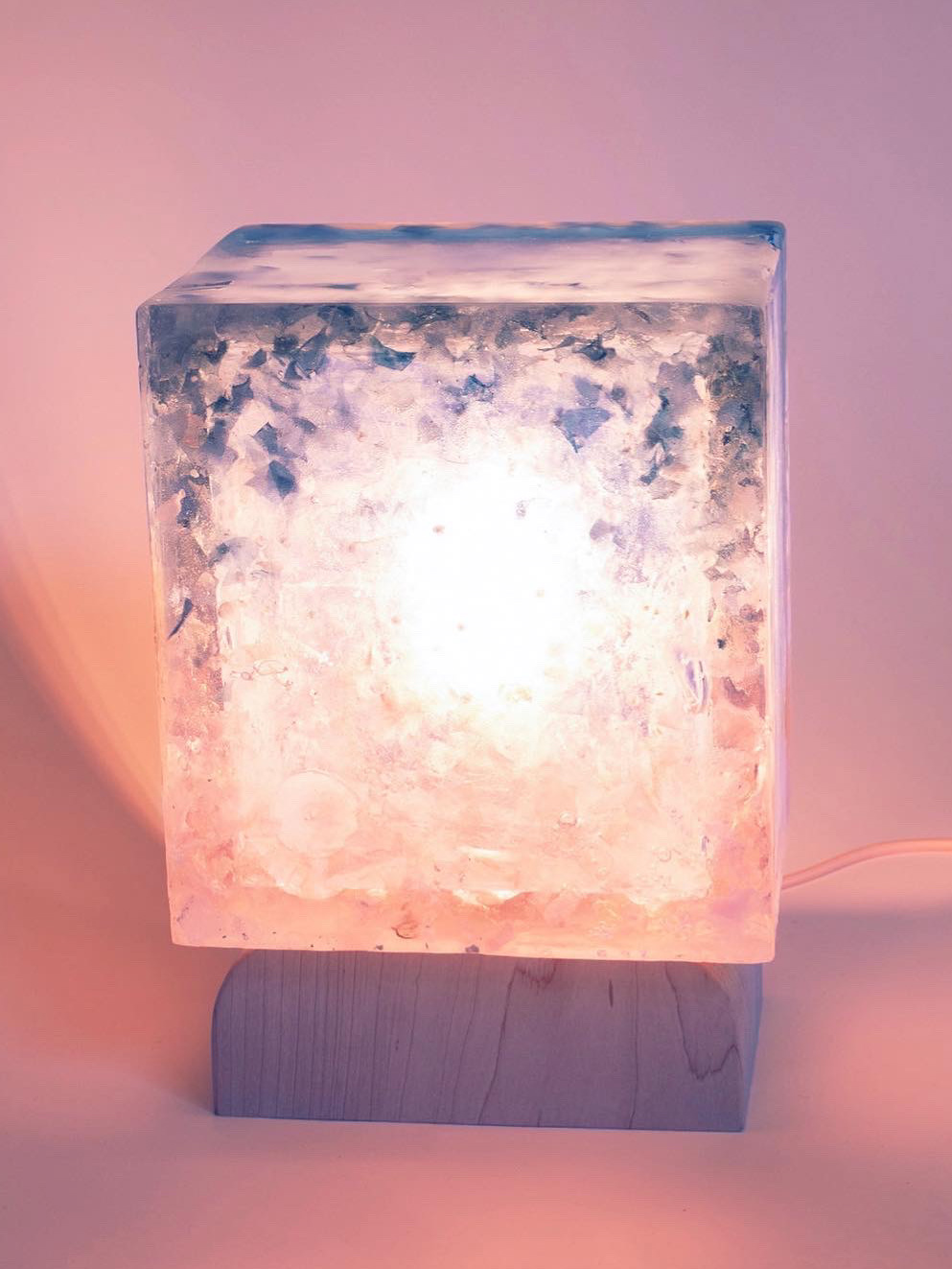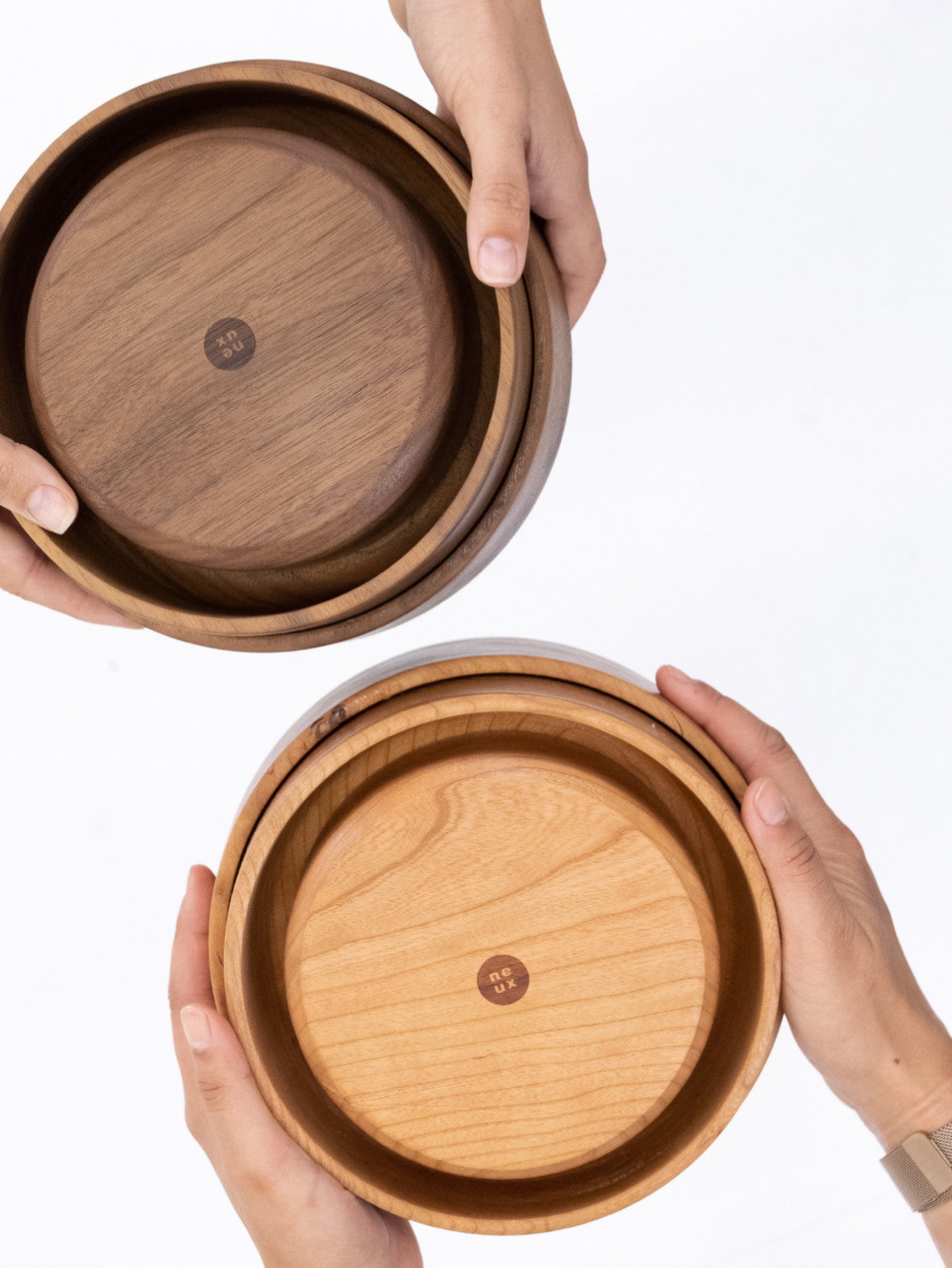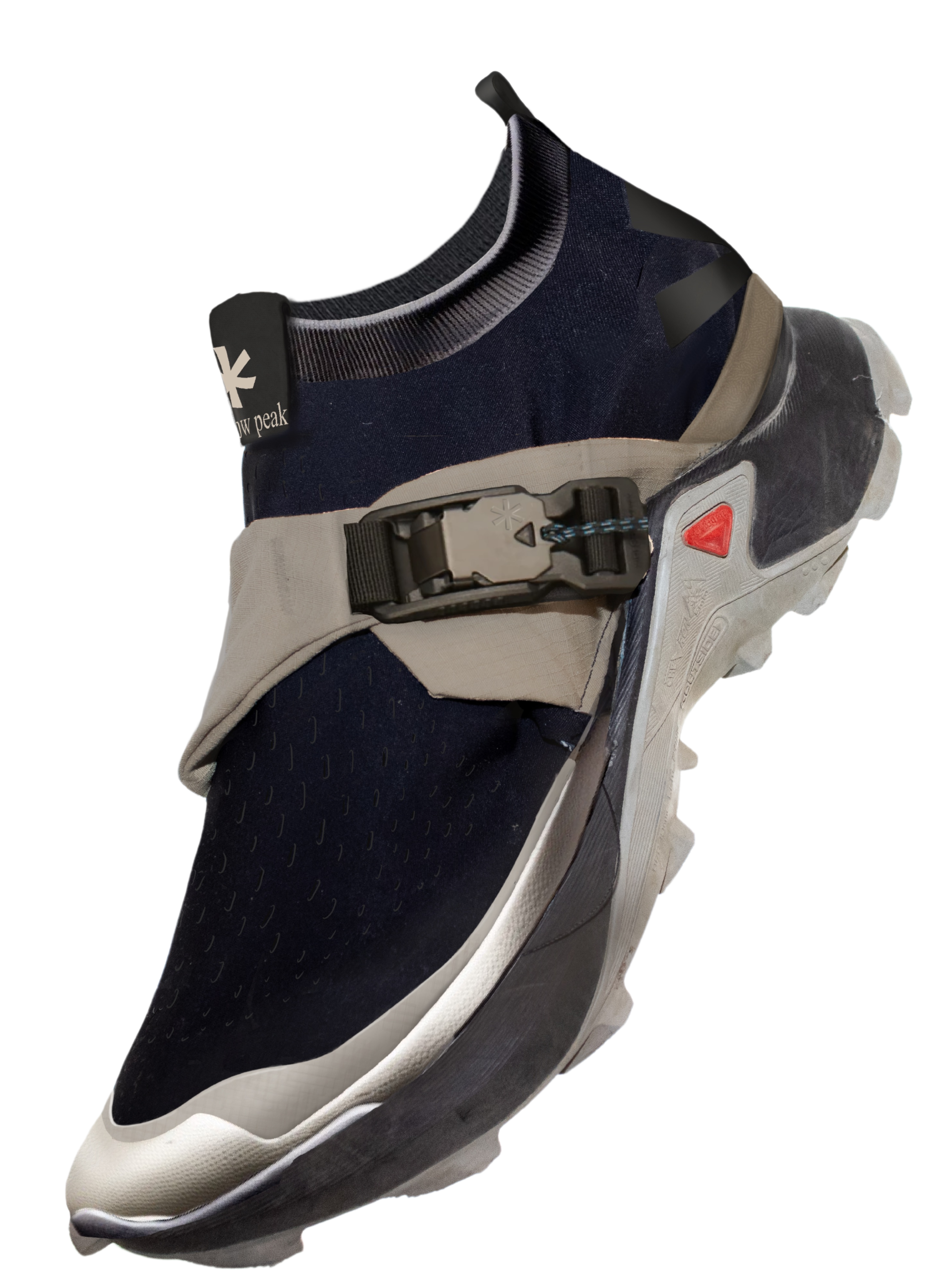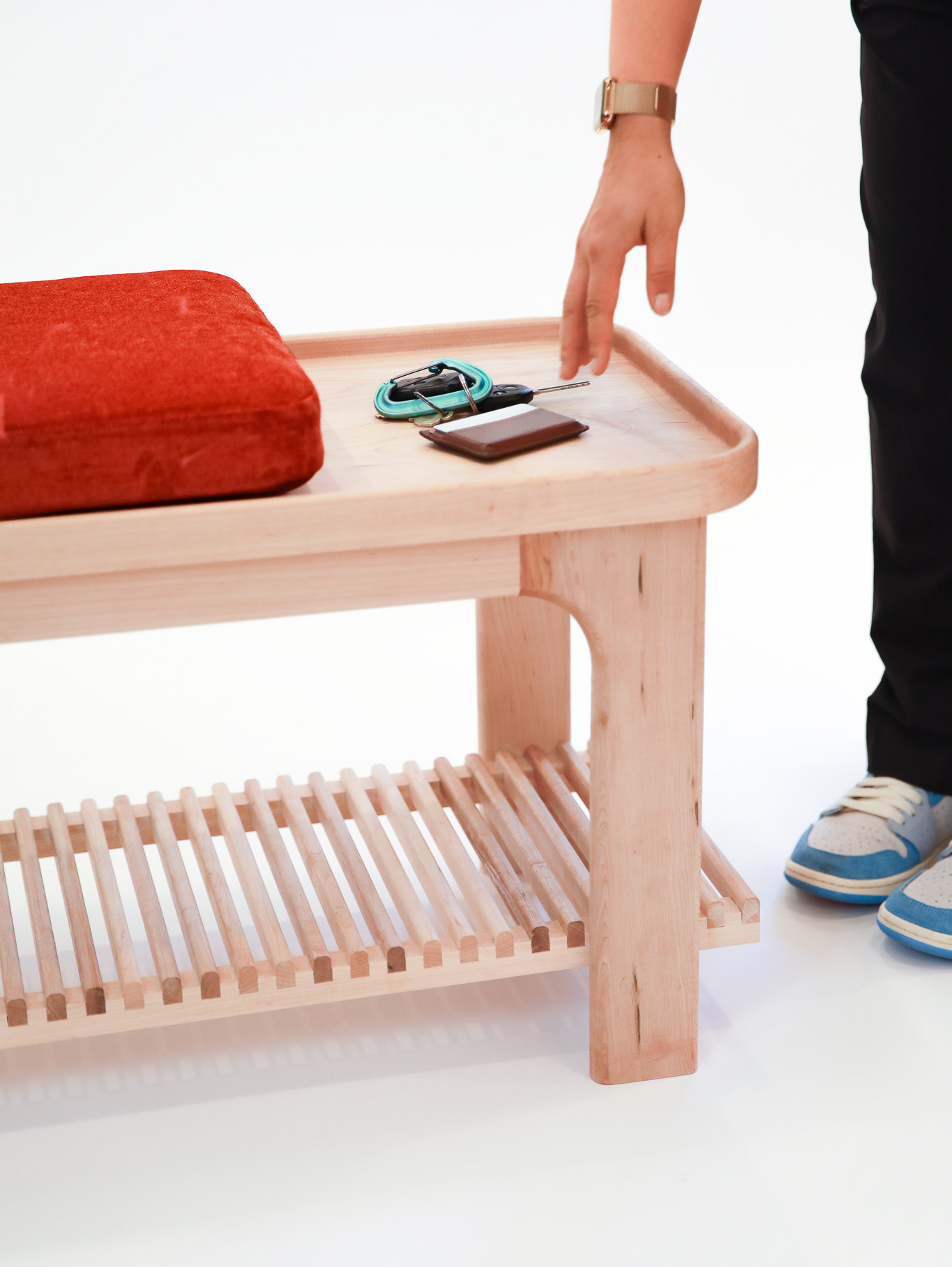Named Osseus after the bone tissue, this lounge chair was designed around the concept of fusing and layering different elements in order to create a skeletal structure that encapsulates the soft, delicate upholstered seat and back. With regards to responsibility, the seat and back feature stain resistant upholstery, prolonging the life of the chair. Furthermore, I wanted to design a piece that the user could build a relationship with. In my own life, the objects of greatest value are the ones I have relationships with. By designing a chair that can be flat-packed, the user must help construct it, thereby building a relationship with the object that encourages the user to care and keep it for a long time.
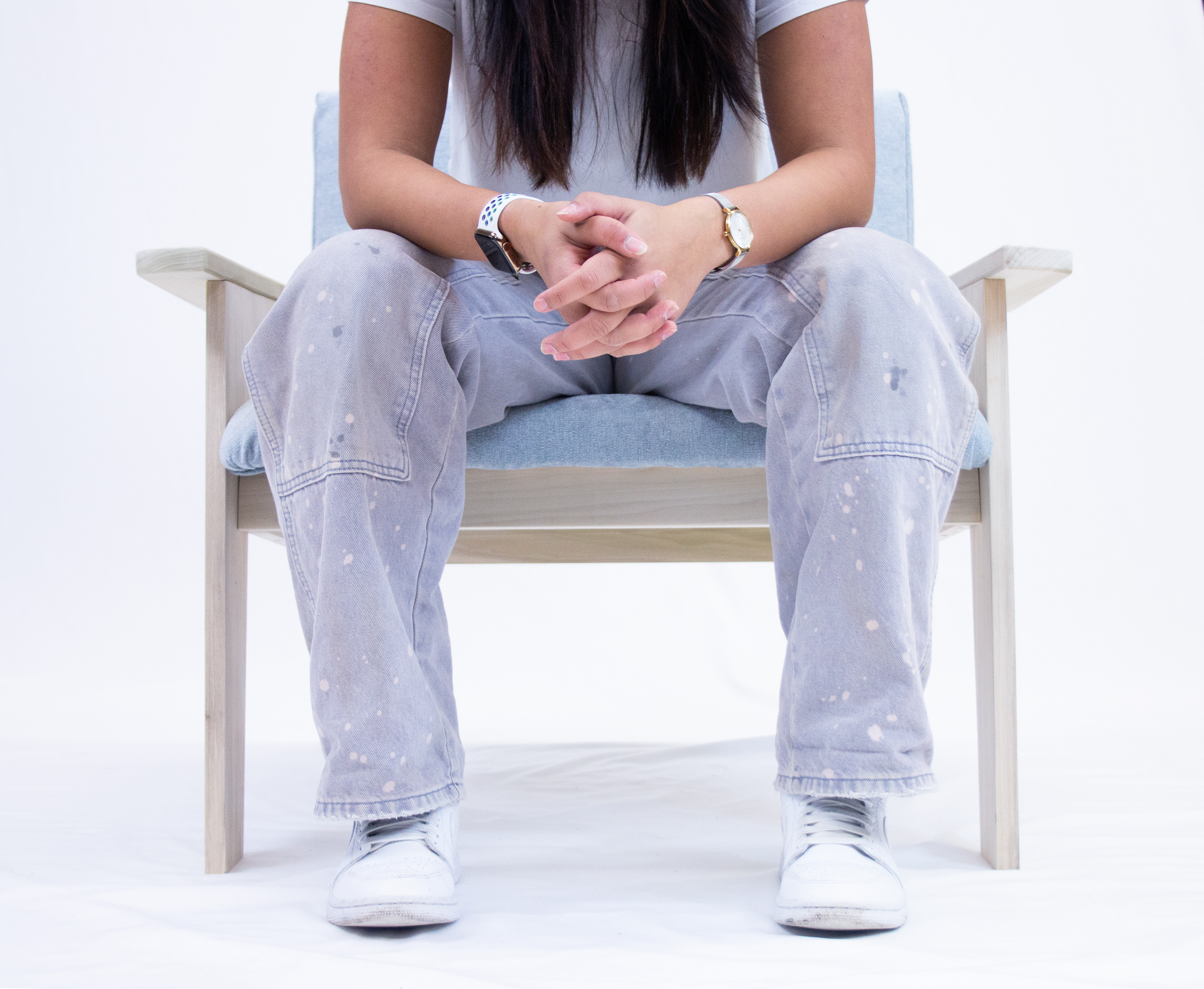
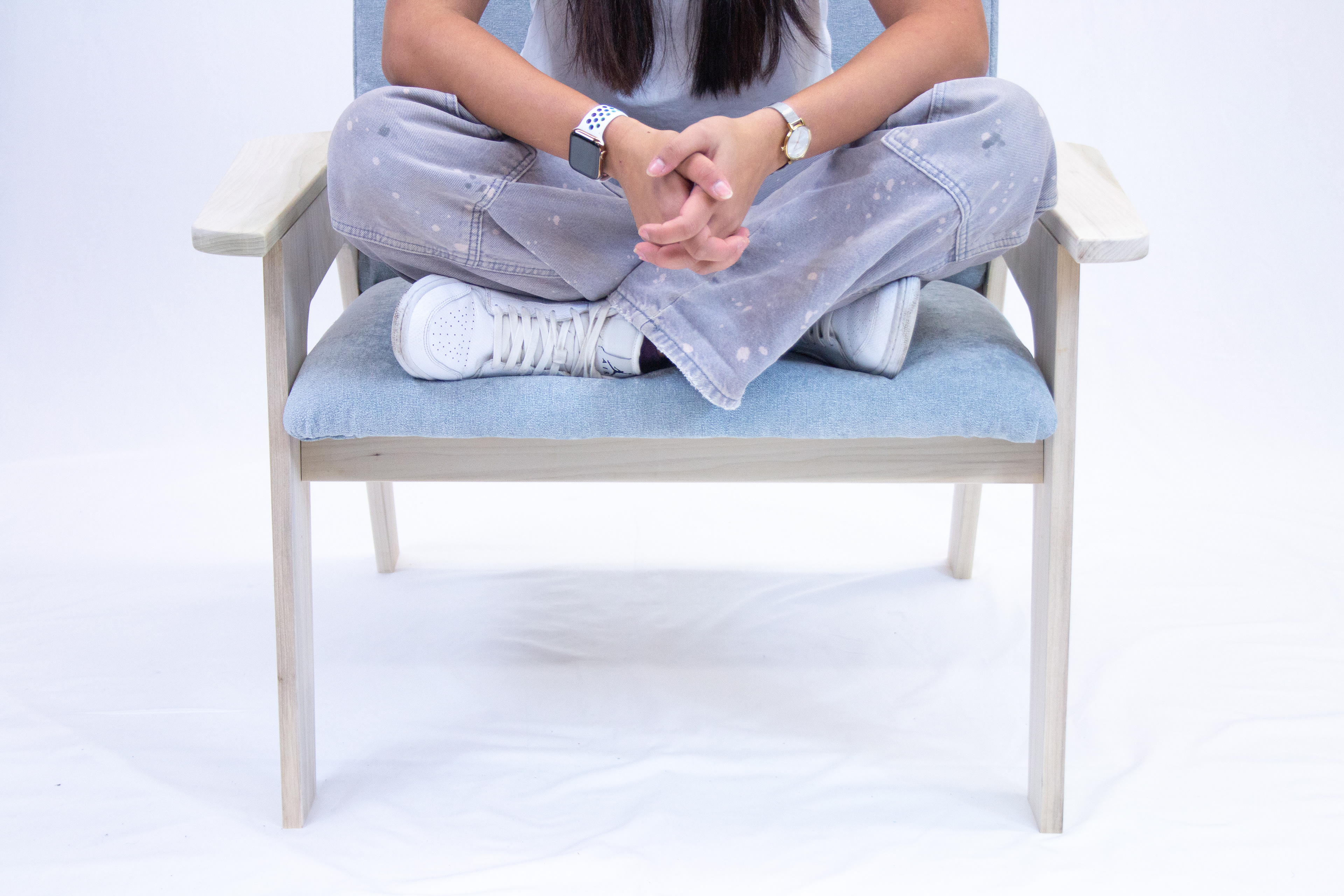
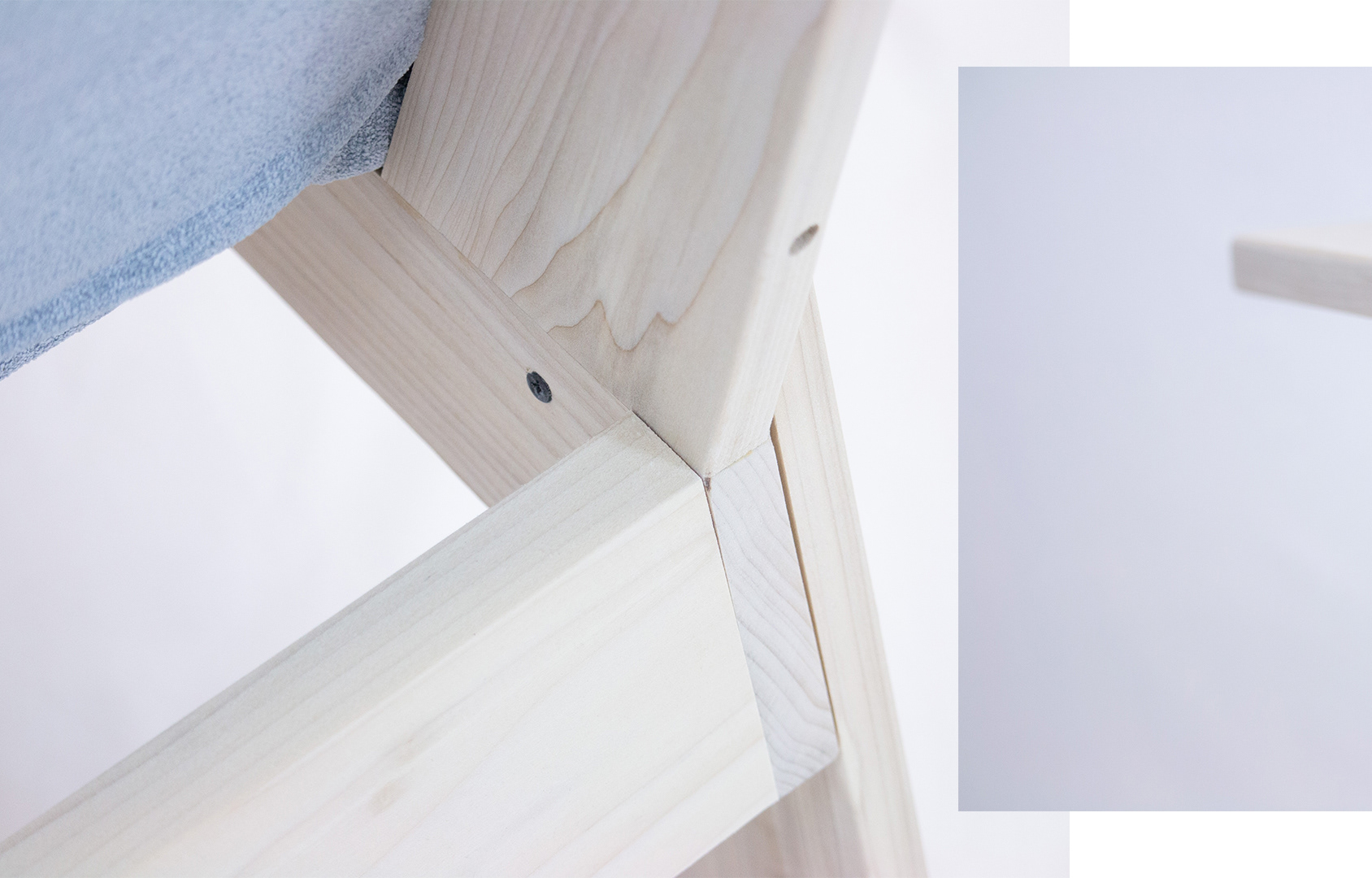
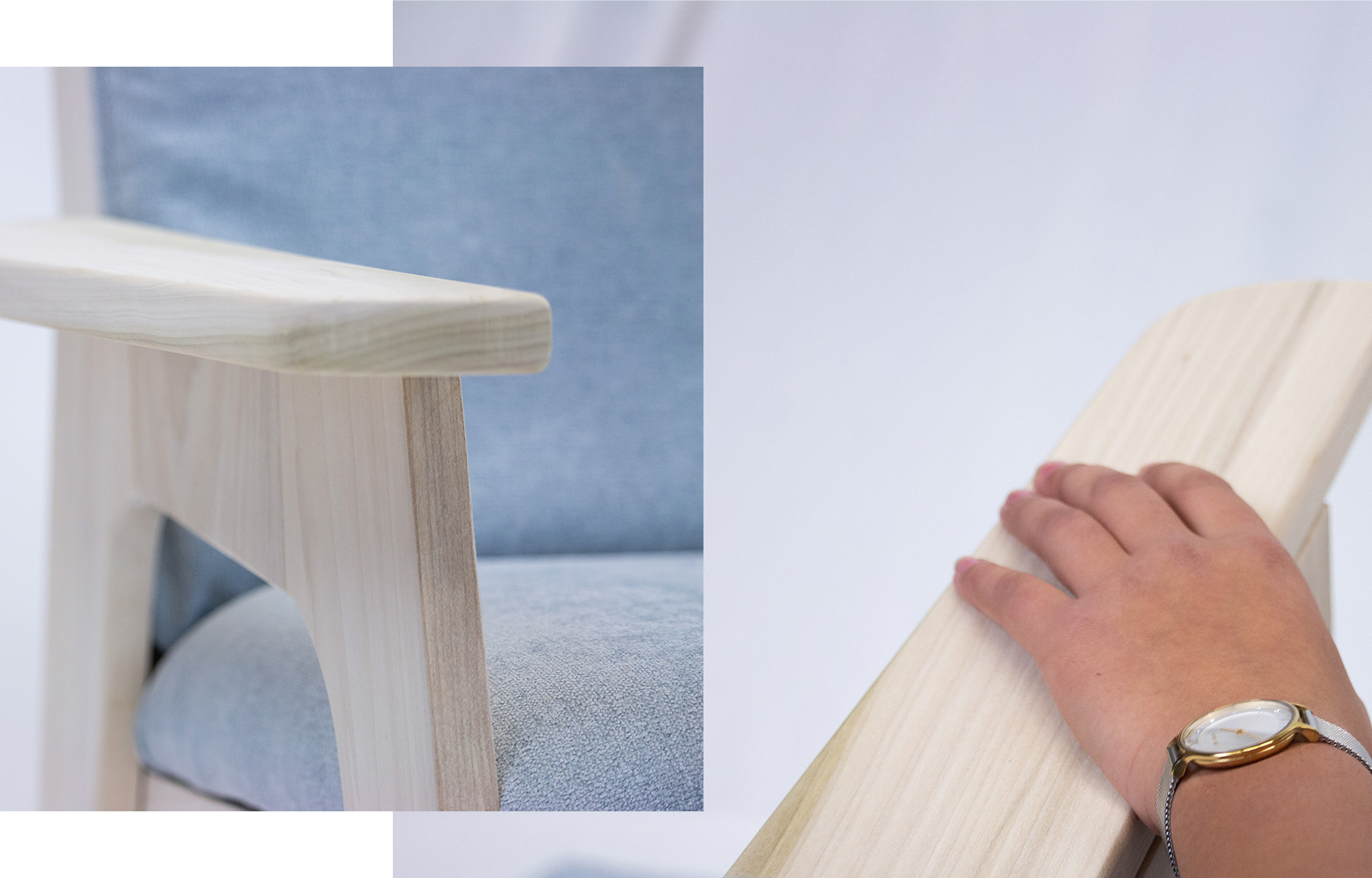
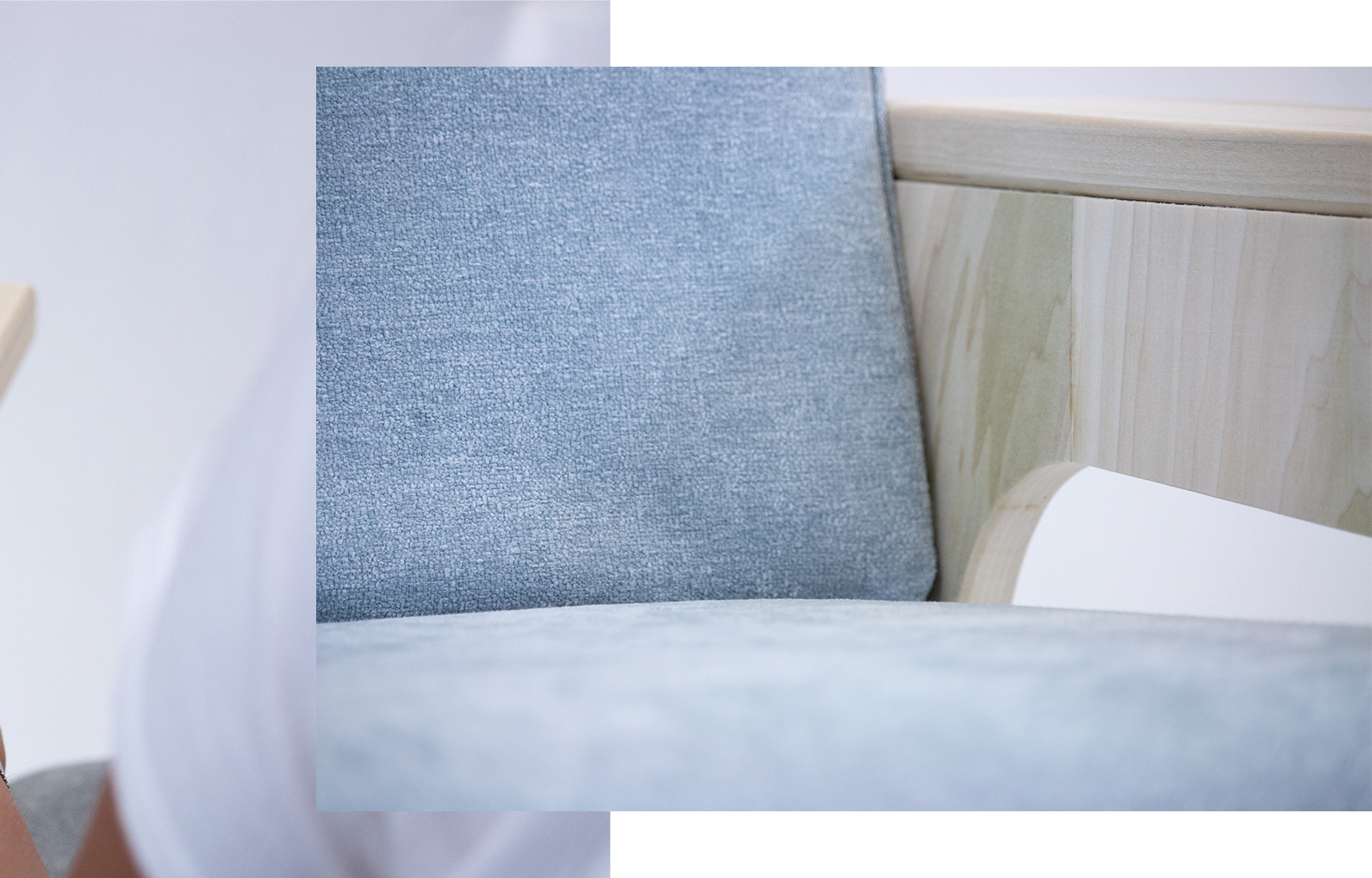
The main aspects of sustainability that I focused on involved creating a relationship with the lounge chair. By designing a chair that can be flat packed, the customer must take it upon themselves to help construct the chair. These steps include using small amounts of wood or white glue on the domino sections, and screwing into pre-drilled holes. For many people, putting furniture together is often viewed as a chore. We, as a consumerist culture, are accustomed to obtaining a product and then disposing of it after it has served its purpose, in this case lounging. However, by taking part in crafting this solid, durable piece, the consumer forms a bond with the product. In addition to these sentiments, I opted for an unobtrusive and tranquil upholstery color, hoping that the consumer might achieve some sense of repose when resting in this piece. Finally, the seat back supports reflect the leg curvature, meaning that I was able to salvage the extra material used when cutting out the legs.
